NOTICE
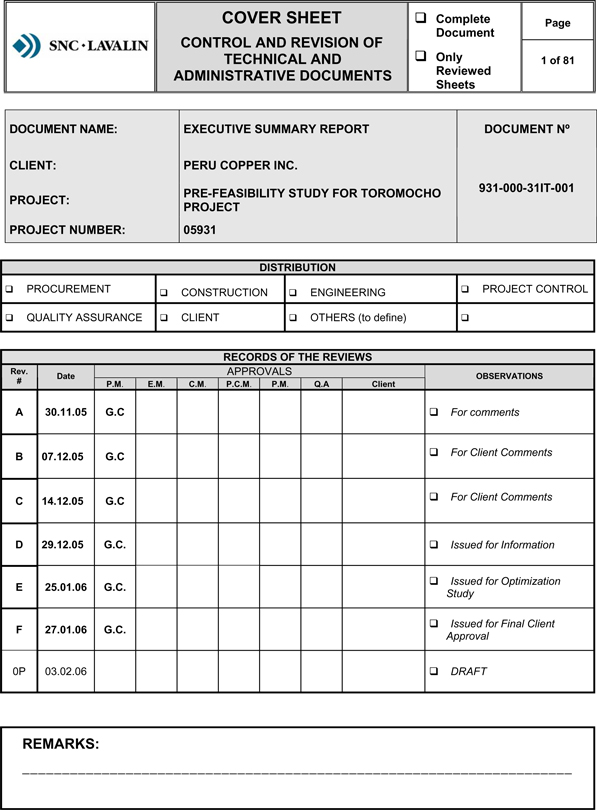
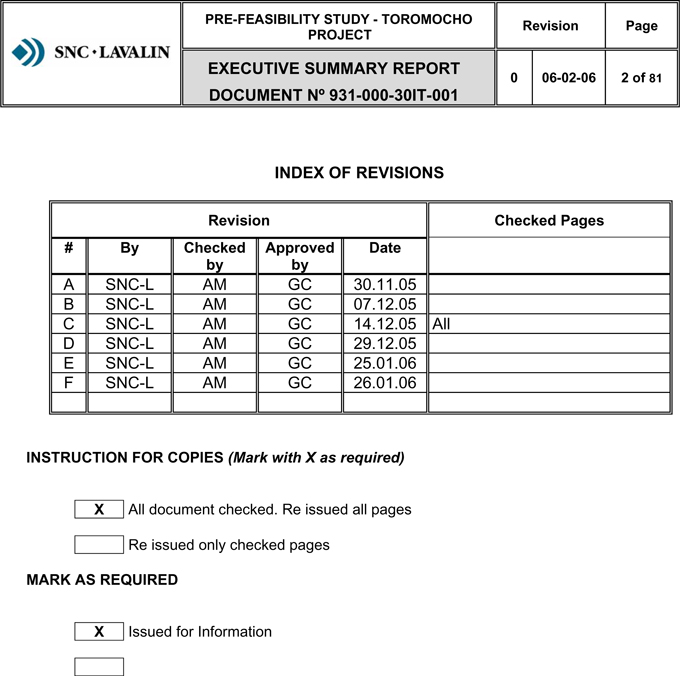
 |
|
 | ||
| Page 3 of 81 |
NOTICE
This document contains the expression of the professional opinion of SNC-Lavalin Chile S.A (“SLC”) as to the matters set out herein, using its professional judgment and reasonable care. It is to be read in the context of the agreement dated September 8, 2005 (the “Agreement”) between SLC and Peru Copper Inc. (the “Client”), and the methodology, procedures and techniques used, SLC’s assumptions, and the circumstances and constraints under which its mandate was performed. This document is written solely for the purpose stated in the Agreement, and for the sole and exclusive benefit of the Client, whose remedies are limited to those set out in the Agreement. This document is meant to be read as a whole, and sections or parts thereof should not be read or relied upon out of context.
SLC has, in preparing estimates, as the case may be, followed methodology and procedures, and exercised due care consistent with the intended level of accuracy, using its professional judgment and reasonable care, and is thus of the opinion that there is a high probability that actual values will be consistent with the estimate(s). However, no warranty should be implied as to the accuracy of estimates. Unless expressly stated otherwise, assumptions, data and information supplied by, or gathered from other sources (including the Client, other consultants, testing laboratories and equipment suppliers, etc.) upon which SLC’s opinion as set out herein is based has not been verified by SLC; SLC makes no representation as to its accuracy and disclaims all liability with respect thereto.
To the extend permitted by law, SLC disclaims any liability to the Client and to third parties in respect of the publication, reference, quoting, or distribution of this report or any of its contents to any reliance thereon by any third party.
Note: The reports provided by third parties have been edited for format and consistency only. The content has not been altered in any way.
 |
|
 | ||
| Page 4 of 81 |
EXECUTIVE SUMMARY
TABLE OF CONTENTS
| Page Nºr | ||||||
| COVER SHEET | 1 | |||||
| INDEX OF REVISIONS | 2 | |||||
| NOTICE | 3 | |||||
| TABLE OF CONTENTS | 4 | |||||
| 1.1 |
Introduction | 5 | ||||
| 1.1.1 | Project Summary | 5 | ||||
| 1.1.2 | Pre-Feasibility Study Participants | 5 | ||||
| 1.1.3 | Report Organization | 6 | ||||
| 1.2 |
Project Background | 8 | ||||
| 1.3 |
Study Background | 9 | ||||
| 1.4 |
Scope of The Pre-Feasibility Study | 10 | ||||
| 1.5 |
General Project Description | 12 | ||||
| 1.5.1 | Location, Climate and Access | 12 | ||||
| 1.5.2 | Geology | 13 | ||||
| 1.5.3 | Resources, Mine and Slope Design | 18 | ||||
| 1.5.4 | Hydrology | 31 | ||||
| 1.5.5 | Concentrator | 33 | ||||
| 1.5.6 | Tailings Dam | 40 | ||||
| 1.5.7 | ROM Xxxxx SX/EW Plant | 48 | ||||
| 1.5.8 | Infrastructure | 49 | ||||
| 1.5.9 | Environment | 56 | ||||
| 1.5.10 | Community Relations Program | 57 | ||||
| 1.6 |
Capital Cost Estimate | 59 | ||||
| 1.7 |
Operating Cost Estimate | 62 | ||||
| 1.7.1 | Concentrator (determined by SNC-L) | 62 | ||||
| 1.7.2 | Mine | 62 | ||||
| 1.7.3 | Tailings Dam (determined by Xxxxxxxxxx Xxxxxx Harza, MWH) | 62 | ||||
| 1.7.4 | ROM Xxxxx SX-EW | 63 | ||||
| 1.7.5 | Smelter Deduct – Metal Content | 63 | ||||
| 1.7.6 | Refining | 63 | ||||
| 1.7.7 | Other General Costs | 63 | ||||
| 1.7.8 | Royalties | 63 | ||||
| 1.7.9 | Summary of Operating Costs | 63 | ||||
| 1.7.10 | Mine and Concentrator Manpower Summary. | 64 | ||||
| 1.8 |
Initial Economic Evaluation | 66 | ||||
| 1.9 |
Technical Risk | 71 | ||||
| 1.10 |
Project Implementation Plan (PIP) | 72 | ||||
| 1.11 |
Conclusions and Recommendations | 80 | ||||
| 1.11.1 | Conclusions | 80 | ||||
| 1.11.2 | Recommendations | 81 | ||||
 |
|
 | ||
| Page 5 of 81 |
| 1.1 | Introduction |
| 1.1.1 | Project Summary |
PERU COPPER INC. (PCI) requested SNC-LAVALIN CHILE S.A. (SNC-L) to develop a pre-feasibility study for the concentrator plant, infrastructure and environmental and permit issues related with the development of the Toromocho Project.
Also as part of the request, information prepared by third parties related to the mine, pit slope design, geology, hydrology, tailings, ROM xxxxx SX/EW Plant and community relations issues is to be integrated into the final Pre Feasibility Report.
This report summarizes the information, conclusions and recommendations that are part of each independent volume shown in section 1.1.3.
| 1.1.2 | Pre-Feasibility Study Participants |
This study was prepared jointly by SNC-L, independent consultants and PCI. In addition PCI prepared the sections on Project Background, Study Background and the Scope of Pre-feasibility Study.
Specific sections were developed by other consultants under the coordination and responsibility of PCI and SNC-L as indicated in the following table:
Study Participants
| Section |
Consultant |
Responsible / Coordinator | ||
| Concentrator Facilities |
SNC-L and IDESOL Ingenieros |
SNC-L | ||
| Project Infrastructure Facilities |
SNC-L |
SNC-L | ||
| XXX Xxxxx and SX-EW Plant |
Minerals Advisory Group (MAG) |
PCI | ||
| Mine |
Independent Mining Consultants Inc. |
PCI | ||
| Pit Slope Design |
Call & Xxxxxxxx Inc. |
PCI | ||
| Geology |
PCI |
PCI | ||
 |
|
 | ||
| Page 6 of 81 |
| Matter |
Consultant |
Responsible / Coordinator | ||
| Hydrology | Xxxxx X. Xxxxxxxxxx & Associates, Inc – Hydro Geo Ingeniería S.A.C. | PCI | ||
| Environment and Permits Issues | Knight Piésold Chile S.A. (KPSA) | SNC-L | ||
| Tailings Dam and Water reclaim | Xxxxxxxxxx Xxxxxx Harza – PSI-JRI | PCI | ||
| Community Relations | PCI | PCI | ||
| 1.1.3 | Report Organization |
The organization of the final report for the Pre-feasibility Study is presented according to the following sections (volumes):
SECTION 1.0: Executive Summary (this volume)
SECTION 2.0: Process Plant
SECTION 3.0: Infrastructure
SECTION 4.0: Geology
SECTION 5.0: Mining
SECTION 6.0: Hydrology
SECTION 7.0: Tailings Dam
SECTION 8.0: Community Relations
SECTION 9.0: Environment and Permit Issues
 |
|
 | ||
| Page 7 of 81 |
SECTION 10: Capital and Operating Cost and Economic Evaluation
 |
|
 | ||
| Page 8 of 81 |
| 1.2 | Project Background |
(Prepared by PCI)
Exploration in the area started in 1928 when low grade copper mineralization was discovered by Cerro de Pasco Corporation. Further exploration was carried out by Cerro de Pasco, until 1973/74, when the property was nationalized by the Peruvian Government and transferred to Centromin, the government mining organization.
During the 1970’s, Xxxxxxxxx continued exploration, carried out a drilling program and in 1980 hired Kaiser Engineers to prepare a detailed feasibility study of the project. The study proposed an open pit mine with a conventional concentrator and heap xxxxx operation.
In the 1990’s Centromin began the process of privatization of all of its assets.
In 1999, X. Xxxxx Xxxxxx, one of the founders of Peru Copper, began studying potential mineable deposits of copper ore reserves in Latin America. Through this process, in 2002, Xx. Xxxxxx determined that Centromin’s Toromocho deposit, located in Morococha, 140 km east of Lima, had potential as a large open pittable operation. In April 2003, Peru Copper Syndicate was formed for the purpose of making a bid for the Toromocho mineral concessions.
The bid was successful, and the Company entered the Toromocho Option Agreement with Centromin in June 2003. The Toromocho Option Agreement gave the Company the right to acquire certain full and partial interests held by Centromin in the mineral concessions and related assets of the Toromocho Project.
The Toromocho Option Agreement requires that in order for the Company to exercise the Toromocho Option, it must (i) expend up to US$ 12 million on exploration and development on the property over a maximum five year option exercise period which commenced on June 11, 2003; (ii) deliver to Centromin a Feasibility Study on the Toromocho Project within such option exercise period and (iii) either provide to Centromin evidence that it meets certain technical and financial requirements or, alternatively, provide evidence that a qualifying financial institution acceptable to Centromin is willing to provide the financing required to develop the Toromocho Project in accordance with the terms of the feasibility study.
 |
|
 | ||
| Page 9 of 81 |
| 1.3 | Study Background |
(Prepared by PCI)
Peru Copper began an intensive drilling program in late 2003, and with the assistance of outside consultants began studies in the areas of geology, metallurgy, water resources, tailings dam, resource definition and mine planning, pit slope design, community relations, and environmental.
As the studies progressed, the Company made the decision to conduct a pre-feasibility study to incorporate all of the study results into one comprehensive document, and to hire an engineering company to develop capital and operating cost estimates for the processing plant and infrastructure. Cost estimates by others for the mine and tailings dam, and leaching, SX-EW are also incorporated into the study.
 |
|
 | ||
| Page 10 of 81 |
| 1.4 | Scope of The Pre-Feasibility Study |
The scope of the pre-feasibility study was defined by PCI as follows:
| a. | Location/property position/history |
(by PCI)
| b. | Exploration/geology/drilling |
(by PCI)
| c. | Mineral resources (by Independent Mining Consultants, Inc.) |
| d. | Mine plan and development and pit slope design |
(by Xxxx Xxxxx, Independent Mining Consultants, Inc. and Xxxx Xxxxxxxx, Call and Xxxxxxxx Inc.)
| e. | Metallurgy |
(by Xxxxxx Xxxx, Minerals Advisory Group and Xxxxxxxxxx Xxxxxx Harza on Tailings)
| f. | Concentrator engineering and process design (by SNC-Lavalin) |
| g. | ROM xxxxx and SX-EW plant (by PCI/MAG) |
| h. | Infrastructure (by SNC-Lavalin) |
| i. | Hydrology (by Xxxxx Xxxxxxxxxx & Associates, Inc and Hydro-Geo Ingenieria, S.A.) |
| j. | Communications (by SNC-Lavalin) |
| k. | Power (by Peru Copper and SNC-Lavalin) |
| l. | Materials management (by SNC-Lavalin) |
| m. | Work force (by SNC-Lavalin) |
| n. | Environmental considerations (by SNC-Lavalin) |
| o. | Permit requirements (by SNC-Lavalin) |
| p. | Schedule (by SNC-Lavalin) |
| q. | Project execution outline (by SNC-Lavalin) |
 |
|
 | ||
| Page 11 of 81 |
| r. | Preliminary capital cost estimate (by SNC-Lavalin) |
| s. | Operating cost (by SNC-Lavalin) |
| t. | Initial economic evaluation and financial analysis (by SNC-Lavalin) |
| u. | Risk evaluation (by SNC-Lavalin) |
 |
|
 | ||
| Page 12 of 81 |
| 1.5 | General Project Description |
| 1.5.1 | Location, Climate and Access |
The Toromocho Project is located in central Peru, approximately 140 km east of Lima in the Morococha mining district, Yauli province, Junin Department, at 4500 to 5000 meters above sea level.
Figure 1.5.1 Toromocho Project location.
Figure 1.5.1
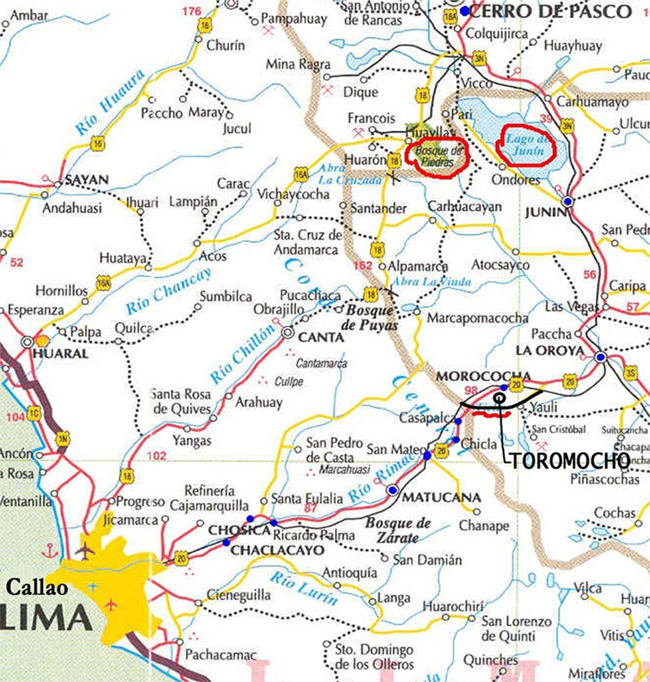
 |
|
 | ||
| Page 13 of 81 |
Access to the Toromocho Project is by both a paved, two lane central highway and the central railway, which connect the Morococha mining district to both Lima and La Oroya. No airstrip is available in the area.
The Toromocho District climate has two well defined seasons. The rainy season usually extends from December to March and has frequent brief hail and snow falls. Snow accumulation is rare, and usually melts with the winter sun. The rest of the year is reasonably dry with sporadic and sudden rain squalls and infrequent occurrences of lightning storms in the area.
| 1.5.2 | Geology |
(Extracted from PCI Report, prepared by X. Xxxxxxx October 26th 2005)
The Toromocho project is favored by its location with respect to existing infrastructure.
The Toromocho orebody lies within the central copper zone of the well-zoned Cu/Pb-Zn/Pb-Ag poly-metallic Morococha District. The orebody forms a center of skarn and breccia associated with 7 m.y. old mineralization, alteration, and granodiorite and porphyry intrusives.
The majority of higher grade copper mineralization is contained within highly fractured relatively soft and easily mineable actinolite and clay altered skarn mineralization. The remainder is contained within more competent biotite altered intrusive rocks.
Primary chalcopyrite mineralization is secondarily enriched with chalcocite especially in the upper portions of the orebody where frequently more than 50% of the copper is “soluble” by acid and cyanide sequential xxxxx assays, indicating amenability for ferric leaching.
The ore body has been “pre-stripped” by removal of much of the leached capping by Pleistocene glaciation. This will result in favorable and relatively low stripping ratios for future open pit mining compared to many other large active porphyry copper operations like Chuquicamata, Escondida and Xxxxxxx.
The orebody contains approximately two billion tonnes of +0.3% Cu mineralization (measured, indicated and inferred) averaging 0.46% Cu, and including silver and molybdenum credits, a copper equivalent grade of 0.68% Cu. This includes a core of of about one billion tones of resources averaging 0.6% Cu, with a 0.88% Cu equivalent grade.
Significant silver and molybdenum credits enhance the overall value of the ore by approximately 20-30%. Except in relatively small upper level portions of the orebody, arsenic and other undesirable elements are low and present in amounts generally below that which attract smelter penalties.
The molybdenum distribution in the central and main part of the orebody is in the form of inverted cones or shells open downwards, and plunging to the north. Between the surfaces and elevations of 4,600 to 4,700 m molybdenum values are typically between 50 and 150 ppm. Below about 4,500 m elevation values over 300 ppm can occur. Recent deep holes have found even higher values (500-600 ppm Mo) below about 4,200 m – 4,300 m elevation.
 |
|
 | ||
| Page 14 of 81 |
The Toromocho deposit has the potential to become a commercial ore body and be developed into a large productive open pit copper operation.
Exploration of the Toromocho deposit has included detailed geological mapping, diamond drilling program, a small open pit and sampling of some underground crosscuts (the total lengths developed are, drifts 33,905 meters and, crosscuts 18,939 meters).
The Cerro de Pasco Corporation, Centromin and Minera Perú Copper S.A. carried out diamond drilling campaigns (1966-68, 1970-71, 72-73, 74-76 and 2003-2005).
A total of 334 holes were completed, totaling 132,466 meters.
Diamond drilling holes
1966-2005
| YEAR |
N° DDH |
Meters | ||||
| CdeP |
1966-72 | 82 | 20 251.0 | |||
| CMP |
1974 | 61 | 22 143.0 | |||
| MPCopper |
2003-05 | 191 | 90 072.3 | |||
| TOTAL |
334 | 132 466.3 | ||||
Note: Minera Peru Copper S.A. (MPCopper) is a subsidiary of Peru Copper Inc.
 |
|
 | ||
| Page 15 of 81 |
Figure 1.5.2a
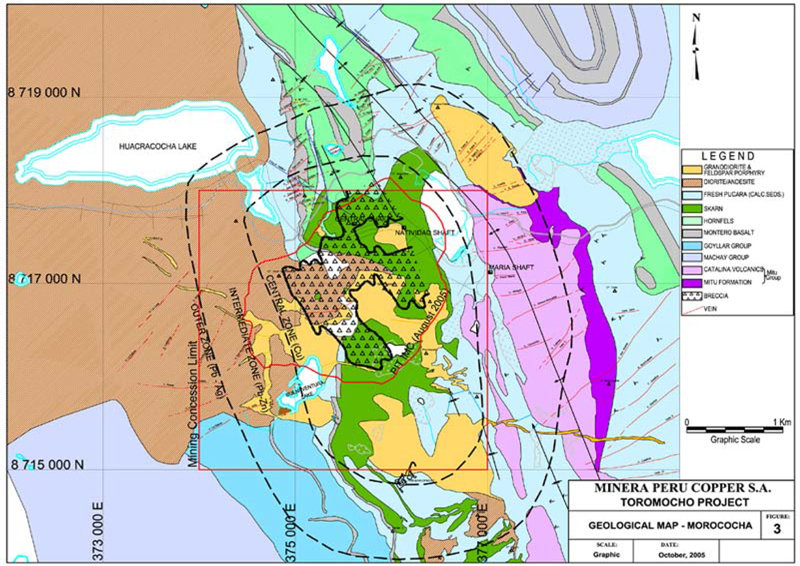 |
 |
|
 | ||
| Page 16 of 81 |
Figure 1.5.2b
 |
 |
|
 | ||
| Page 17 of 81 |
Figure 1.5.2c
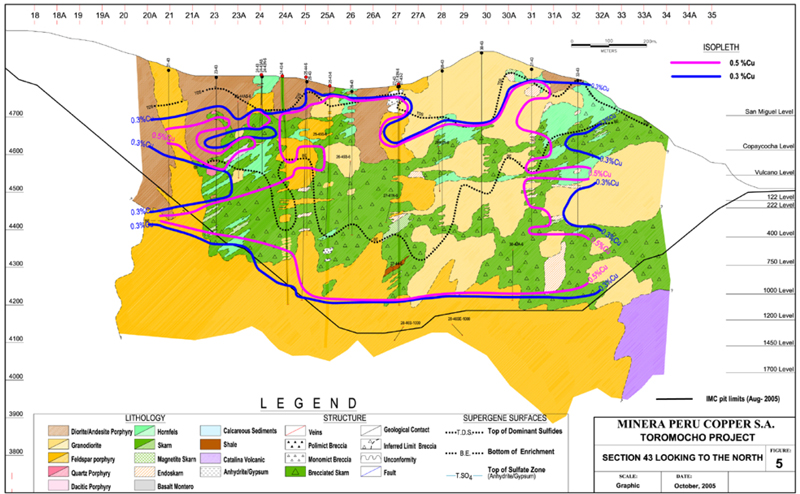 |
 |
|
 | ||
| Page 18 of 81 |
| 1.5.3 | Resources, Mine and Slope Design |
Resources and Mine (Extracted from Independent Mining Consultants, Inc., Report October 2005)
Peru Copper Inc. (PCI) requested Independent Mining Consultants, Inc. (IMC) to prepare the mining component of a feasibility study for the Toromocho project in Peru. The IMC report summarizes the development of the block model, mine plan, and the resulting mine costs to feed a 150,000 tonne per day (tpd) sulfide mill operation from a conventional open pit mine.
The global resource for Toromocho is 1.834 billion tonnes of measured and indicated material, with an additional 241 million tonnes of inferred material.
Within this resource is a central core of measured and indicated material of 967 million tonnes at a grade of 0.60% Cu, 0.023% Mo, and 8.3 gm/t Ag, with a copper equivalent of 0.88% Cu, using a 0.60% Cu equivalent cutoff grade. Details of the resource are summarized in the following Table 1.5.3a:
Table 1.5.3a
Toromocho Resource
| Measured |
Contained Metal | |||||||||||||||
| Equiv Cu Cutoffs |
Million Tonnes |
Total % |
Moly % |
Silver gm/t |
Equivalent Copper % |
Cu Million Lbs |
Moly Million Lbs |
Silver Million Ozs | ||||||||
| plus 0.60% |
209 | 0.66 | 0.025 | 6.7 | 0.95 | 3,041 | 115 | 45 | ||||||||
| 0.27% to 0.59% |
89 | 0.33 | 0.012 | 5.0 | 0.45 | 647 | 24 | 14 | ||||||||
| Total Plus 0.27% |
298 | 0.56 | 0.021 | 6.2 | 0.80 | 3,688 | 139 | 59 | ||||||||
| Indicated |
Contained Metal | |||||||||||||||
| Equiv Cu Cutoffs |
Million Tonnes |
Total % |
Moly % |
Silver gm/t |
Equivalent Copper % |
Cu Million Lbs |
Moly Lbs |
Silver Million Ozs | ||||||||
| plus 0.60% |
758 | 0.58 | 0.023 | 8.5 | 0.86 | 9,692 | 384 | 207 | ||||||||
| 0.27% to 0.59% |
776 | 0.32 | 0.009 | 5.3 | 0.45 | 5,489 | 154 | 133 | ||||||||
| Total Plus 0.27% |
1,536 | 0.45 | 0.016 | 6.9 | 0.65 | 15,181 | 538 | 340 | ||||||||
| Measured + Indicated |
Contained Metal | |||||||||||||||
| Equiv Cu Cutoffs |
Million Tonnes |
Total % |
Moly % |
Silver gm/t |
Equivalent Copper % |
Cu Million Lbs |
Moly Million Lbs |
Silver Ozs | ||||||||
| plus 0.60% |
967 | 0.60 | 0.023 | 8.1 | 0.88 | 12,733 | 499 | 252 | ||||||||
| 0.27% to 0.59% |
867 | 0.32 | 0.009 | 5.3 | 0.45 | 6,136 | 178 | 147 | ||||||||
| Total Plus 0.27% |
1,834 | 0.47 | 0.016 | 6.8 | 0.68 | 18,869 | 677 | 399 | ||||||||
| Inferred |
Contained Metal | |||||||||||||||
| Equiv Cu Cutoffs |
Million Tonnes |
Total % |
Moly % |
Silver gm/t |
Equivalent Copper % |
Cu Million Lbs |
Moly Million Lbs |
Silver Ozs | ||||||||
| plus 0.27% |
241 | 0.41 | 0.010 | 8.3 | 0.57 | 2,178 | 53 | 64 | ||||||||
 |
|
 | ||
| Page 19 of 81 |
The mine production schedule is summarized on Table 1.5.3b. The schedule delivers a nominal 150,000 tpd (54,750 ktonnes per year) of sulfide mill ore to the primary crushers. Low grade mill ore that is hosted in calc-silicates (skarn) is stockpiled to a low grade mill ore stockpile for processing at the end of the pit life. Intrusive hosted ores are considered for heap xxxxx based on the relative costs and recoveries of milling versus leaching. Roughly 5,000 kt/yr of the best grade leachable ore is delivered to a heap xxxxx pad. Low grade ore that could be leached or milled is stockpiled south of the mine for eventual processing. The two low grade stockpiles are planned for re handle to the mill at the end of the mine life. However, the low grade xxxxx stockpile could potentially be heap leached.
The resulting mill feed schedule including the re handle of both stockpiles is summarized on Table 1.5.3c. Figure 1.5.3a is a graphic representation of the material movements and head grades. Figure 1.5.3b illustrates the mine, waste storage, and stockpiles at the end of the open pit life. Reclamation of the two stockpiles to the mill has not occurred on Figure 1.5.3b.
Figure 1.5.3b illustrates that the mine plan does encroach on the town of Morococha. However, the national highway is respected by an offset of about 150m. Property constraints provided by PCI personnel were also respected in the design of the open pit. Slope angle recommendations from Call & Xxxxxxxx, Inc. (CNI) were utilized in the pit design.
This mine plan utilizes mineralization that is classified only as measured and / or indicated. If the inferred resource of 241 million tonnes @ 0.41% Cu were eventually re-classified as measured and / or indicated, it would add an additional 4.5 years of life to the project.
All units within this report are metric units unless specifically stated. Ktonnes means 1000 metric tonnes. All mine plan tonnages are presented in terms of dry tonnes. Grades are reported in percent by weight or in the case of silver in grams / tonne.
 |
|
 | ||
| Page 20 of 81 |
Table 1.5.3b
Toromocho Open Pit Production Schedule
Measured and Indicated Mineralization Only
| Mill Ore |
HG ROM Xxxxx at Variable Cutoff |
LG to Mill Stkp at $1.20/T Net Cutoff |
XX Xxxxx Stkp |
Waste Ktonnes |
Total Material Ktonnes | |||||||||||||||||||||||||||||||||||||||
| Year |
Cutoff Grade |
Ktonnes |
Total Cu % |
Moly % |
Silver gm/t |
% Soluble Cu |
Cutoff |
Ktonnes |
Total Cu % |
% Soluble Cu |
Ktonnes % |
Total Cu % |
Moly % |
Silver gm/t |
Ktonnes % |
Total Cu % |
% Sol Cu |
|||||||||||||||||||||||||||
| Net $ |
EqCu% |
Net $ |
||||||||||||||||||||||||||||||||||||||||||
| Preprod |
$ | 2.50 | 0.49 | 2,404 | 0.490 | 0.018 | 8.34 | 65.1 | % | 1.50 | 5,001 | 0.475 | 76.1 | % | 1,193 | 0.169 | 0.029 | 13.362 | 8979 | 0.218 | 67.6 | % | 45,382 | 62,959 | ||||||||||||||||||||
| 1 |
$ | 2.50 | 0.49 | 52,346 | 0.609 | 0.017 | 6.97 | 59.0 | % | 4.75 | 5,423 | 0.737 | 70.1 | % | 6,057 | 0.347 | 0.008 | 4.996 | 38113 | 0.332 | 65.0 | % | 26,061 | 128,000 | ||||||||||||||||||||
| 2 |
$ | 2.50 | 0.49 | 54,750 | 0.627 | 0.018 | 7.44 | 57.2 | % | 2.00 | 5,326 | 0.516 | 70.5 | % | 10,890 | 0.336 | 0.013 | 5.853 | 21388 | 0.240 | 67.3 | % | 31,646 | 124,000 | ||||||||||||||||||||
| 3 |
$ | 2.50 | 0.49 | 54,750 | 0.616 | 0.016 | 7.25 | 44.2 | % | 1.50 | 5,343 | 0.466 | 70.8 | % | 9,126 | 0.362 | 0.010 | 4.587 | 12450 | 0.221 | 70.7 | % | 42,331 | 124,000 | ||||||||||||||||||||
| 4 |
$ | 2.50 | 0.49 | 54,750 | 0.700 | 0.021 | 6.40 | 47.5 | % | 0.50 | 5,078 | 0.365 | 67.8 | % | 6,965 | 0.347 | 0.013 | 4.640 | 7185 | 0.263 | 57.6 | % | 46,022 | 120,000 | ||||||||||||||||||||
| 5 |
$ | 2.50 | 0.49 | 54,750 | 0.546 | 0.014 | 8.87 | 38.0 | % | 0.00 | 4,868 | 0.397 | 57.9 | % | 29,950 | 0.355 | 0.008 | 5.656 | 0 | 0.000 | 0.0 | % | 30,432 | 120,000 | ||||||||||||||||||||
| 6 |
$ | 2.00 | 0.45 | 54,750 | 0.541 | 0.020 | 5.65 | 27.1 | % | 1.20 | 6,256 | 0.359 | 68.1 | % | 5,530 | 0.320 | 0.010 | 4.592 | 6546 | 0.223 | 61.9 | % | 46,918 | 120,000 | ||||||||||||||||||||
| 7 |
$ | 1.75 | 0.43 | 54,750 | 0.656 | 0.025 | 4.98 | 33.0 | % | 0.00 | 7,406 | 0.341 | 51.1 | % | 3,267 | 0.314 | 0.009 | 5.867 | 54,577 | 120,000 | ||||||||||||||||||||||||
| 8 |
$ | 1.50 | 0.41 | 54,750 | 0.495 | 0.012 | 7.73 | 29.7 | % | 0.00 | 5,665 | 0.411 | 43.3 | % | 7,331 | 0.319 | 0.004 | 7.072 | 52,254 | 120,000 | ||||||||||||||||||||||||
| 9 |
$ | 1.50 | 0.41 | 54,750 | 0.466 | 0.011 | 7.02 | 26.0 | % | 0.00 | 1,527 | 0.445 | 42.5 | % | 4,740 | 0.300 | 0.011 | 6.202 | 38,983 | 100,000 | ||||||||||||||||||||||||
| 10 |
$ | 1.50 | 0.41 | 54,750 | 0.507 | 0.015 | 7.31 | 24.7 | % | 0.00 | 2,487 | 0.400 | 45.2 | % | 3,633 | 0.295 | 0.015 | 5.094 | 39,130 | 100,000 | ||||||||||||||||||||||||
| 11 |
$ | 1.50 | 0.41 | 54,750 | 0.484 | 0.015 | 8.50 | 28.0 | % | 0.00 | 833 | 0.723 | 42.7 | % | 4,327 | 0.322 | 0.003 | 5.214 | 40,090 | 100,000 | ||||||||||||||||||||||||
| 12 |
$ | 1.50 | 0.41 | 54,750 | 0.601 | 0.033 | 6.21 | 21.4 | % | 0.00 | 1,413 | 0.551 | 57.3 | % | 447 | 0.232 | 0.033 | 6.170 | 43,390 | 100,000 | ||||||||||||||||||||||||
| 13 |
$ | 1.50 | 0.41 | 54,750 | 0.521 | 0.027 | 7.09 | 20.4 | % | 0.00 | 1,290 | 0.442 | 48.4 | % | 1,762 | 0.305 | 0.027 | 4.306 | 42,198 | 100,000 | ||||||||||||||||||||||||
| 14 |
$ | 1.50 | 0.41 | 54,750 | 0.515 | 0.019 | 6.82 | 21.6 | % | 0.00 | 785 | 0.825 | 44.7 | % | 1,433 | 0.362 | 0.019 | 4.702 | 43,032 | 100,000 | ||||||||||||||||||||||||
| 15 |
$ | 1.50 | 0.41 | 54,750 | 0.573 | 0.018 | 7.22 | 21.7 | % | 0.00 | 138 | 0.665 | 39.6 | % | 922 | 0.340 | 0.000 | 3.135 | 44,190 | 100,000 | ||||||||||||||||||||||||
| 16 |
$ | 0.50 | 0.32 | 54,750 | 0.508 | 0.031 | 7.11 | 18.9 | % | 0.00 | 294 | 0.225 | 48.7 | % | 16,661 | 71,705 | ||||||||||||||||||||||||||||
| 17 |
$ | 0.50 | 0.32 | 54,750 | 0.405 | 0.019 | 5.36 | 19.4 | % | 0.00 | 1,539 | 0.222 | 51.7 | % | 29,947 | 86,236 | ||||||||||||||||||||||||||||
| 18 |
$ | 0.50 | 0.32 | 54,750 | 0.464 | 0.013 | 4.86 | 16.1 | % | 0.00 | 746 | 0.227 | 48.2 | % | 19,399 | 74,895 | ||||||||||||||||||||||||||||
| 19 |
$ | 0.50 | 0.32 | 54,750 | 0.566 | 0.024 | 5.96 | 14.6 | % | 11,732 | 66,482 | |||||||||||||||||||||||||||||||||
| 20 |
$ | 0.50 | 0.32 | 14,350 | 0.324 | 0.036 | 10.67 | 17.2 | % | 3,503 | 17,853 | |||||||||||||||||||||||||||||||||
| Total |
1,054,600 | 0.544 | 0.020 | 6.83 | 29.8 | % | 61,418 | 0.447 | 0.605 | 97,573 | 0.336 | 0.010 | 5.538 | 94,661 | 0.273 | 65.7 | % | 747,878 | 2,056,130 | |||||||||||||||||||||||||
p15003/aug05/sched/ schOct05tr02.xl
Note: The mineable resource also contains, on average, 0.17% Zn, 0.02% Pb, and 0.02% As.
 |
|
 | ||
| Page 21 of 81 |
Table 1.5.3c
Toromocho, Mill Feed Schedule with Stockpile Rehandle
Measured and Indicated Mineralization Only
| Mill Ore |
|||||||||||||||||||||||
| Year |
Cutoff Grade |
Ktonnes |
Total Cu % |
Moly % |
Silver gm/t |
Zinc % |
Arsenic % |
Lead % |
% Soluble Cu |
||||||||||||||
| Net $ |
EqCu% |
||||||||||||||||||||||
| Preprod |
$ | 2.50 | 0.49 | ||||||||||||||||||||
| 1 |
$ | 2.50 | 0.49 | 54,750 | 0.604 | 0.017 | 7.03 | 0.095 | 0.032 | 0.021 | 59.3 | % | |||||||||||
| 2 |
$ | 2.50 | 0.49 | 54,750 | 0.627 | 0.018 | 7.44 | 0.132 | 0.031 | 0.026 | 57.2 | % | |||||||||||
| 3 |
$ | 2.50 | 0.49 | 54,750 | 0.616 | 0.016 | 7.25 | 0.129 | 0.029 | 0.023 | 44.2 | % | |||||||||||
| 4 |
$ | 2.50 | 0.49 | 54,750 | 0.700 | 0.021 | 6.40 | 0.102 | 0.024 | 0.019 | 47.5 | % | |||||||||||
| 5 |
$ | 2.50 | 0.49 | 54,750 | 0.546 | 0.014 | 8.87 | 0.234 | 0.025 | 0.021 | 38.0 | % | |||||||||||
| 6 |
$ | 2.00 | 0.45 | 54,750 | 0.541 | 0.020 | 5.65 | 0.187 | 0.016 | 0.018 | 27.1 | % | |||||||||||
| 7 |
$ | 1.75 | 0.43 | 54,750 | 0.656 | 0.025 | 4.98 | 0.167 | 0.016 | 0.016 | 33.0 | % | |||||||||||
| 8 |
$ | 1.50 | 0.41 | 54,750 | 0.495 | 0.012 | 7.73 | 0.239 | 0.029 | 0.029 | 29.7 | % | |||||||||||
| 9 |
$ | 1.50 | 0.41 | 54,750 | 0.466 | 0.011 | 7.02 | 0.240 | 0.022 | 0.020 | 26.0 | % | |||||||||||
| 10 |
$ | 1.50 | 0.41 | 54,750 | 0.507 | 0.015 | 7.31 | 0.225 | 0.019 | 0.021 | 24.7 | % | |||||||||||
| 11 |
$ | 1.50 | 0.41 | 54,750 | 0.484 | 0.015 | 8.50 | 0.216 | 0.025 | 0.019 | 28.0 | % | |||||||||||
| 12 |
$ | 1.50 | 0.41 | 54,750 | 0.601 | 0.033 | 6.21 | 0.116 | 0.013 | 0.008 | 21.4 | % | |||||||||||
| 13 |
$ | 1.50 | 0.41 | 54,750 | 0.521 | 0.027 | 7.09 | 0.221 | 0.020 | 0.010 | 20.4 | % | |||||||||||
| 14 |
$ | 1.50 | 0.41 | 54,750 | 0.515 | 0.019 | 6.82 | 0.203 | 0.019 | 0.018 | 21.6 | % | |||||||||||
| 15 |
$ | 1.50 | 0.41 | 54,750 | 0.573 | 0.018 | 7.22 | 0.239 | 0.017 | 0.022 | 21.7 | % | |||||||||||
| 16 |
$ | 0.50 | 0.32 | 54,750 | 0.508 | 0.031 | 7.11 | 0.155 | 0.016 | 0.011 | 18.9 | % | |||||||||||
| 17 |
$ | 0.50 | 0.32 | 54,750 | 0.405 | 0.019 | 5.36 | 0.166 | 0.013 | 0.012 | 19.4 | % | |||||||||||
| 18 |
$ | 0.50 | 0.32 | 54,750 | 0.464 | 0.013 | 4.86 | 0.151 | 0.012 | 0.009 | 16.1 | % | |||||||||||
| 19 |
$ | 0.50 | 0.32 | 54,750 | 0.566 | 0.024 | 5.96 | 0.077 | 0.012 | 0.002 | 14.6 | % | |||||||||||
| 20 |
$ | 0.50 | 0.32 | { | 54,750 | 0.333 | 0.017 | 6.88 | 0.186 | 0.017 | 0.016 | 30.1 | % | ||||||||||
| 21 |
Mill Stkp | 54,750 | 0.336 | 0.010 | 5.54 | 0.219 | 0.018 | 0.022 | 34.7 | % | |||||||||||||
| 22 |
2,423 | 0.336 | 0.010 | 5.54 | 0.219 | 0.018 | 0.022 | 34.7 | % | ||||||||||||||
| Total |
1,152,173 | 0.526 | 0.019 | 6.72 | 0.176 | 0.020 | 0.017 | 30.2 | % | ||||||||||||||
Note: Inclusion of the 241 million tonnes of inferred resources would add an additional 4.5 years of life to the project.
 |
|
 | ||
| Page 22 of 81 |
Figure 1.5.3a
Graphic Illustration of Mine and Mill Production Schedule
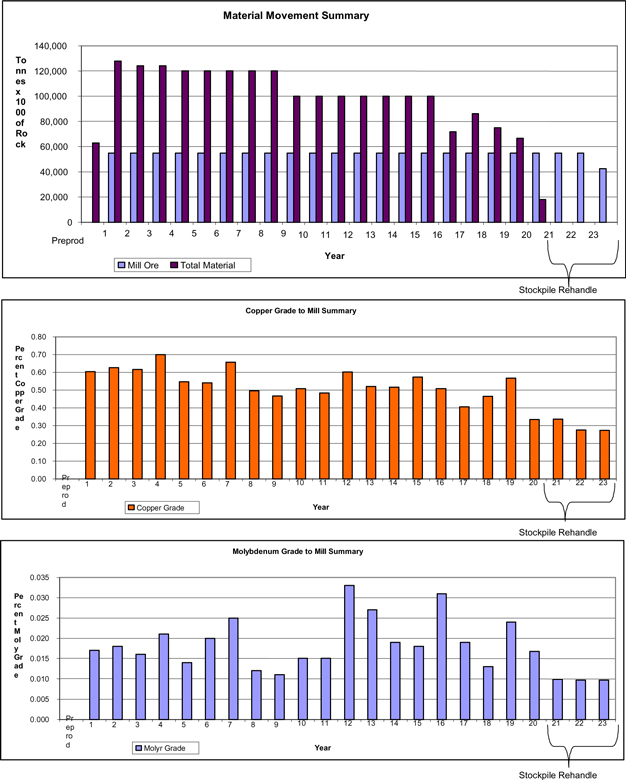
 |
|
 | ||
| Page 23 of 81 |
Figure 1.5.3b
Mine, Waste Dump, Stockpiles, End of Open Pit Life
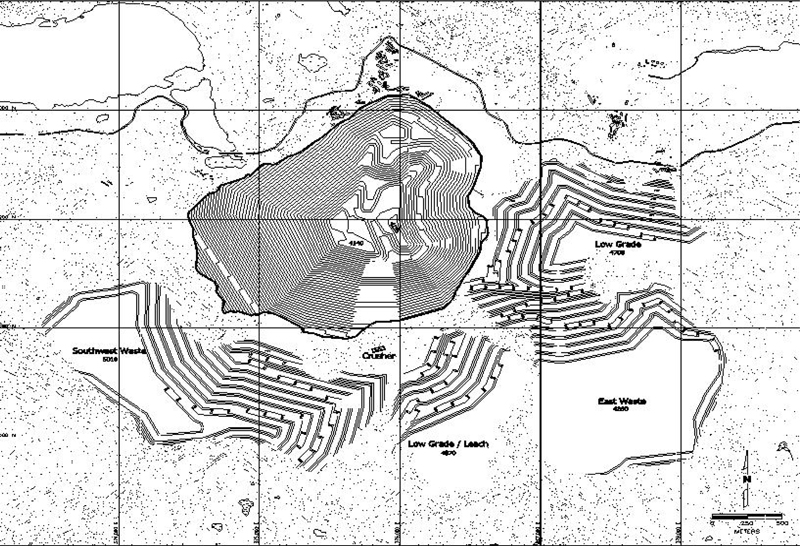 |
 |
|
 | ||
| Page 24 of 81 |
Mine Operations
The mining process will be typical of large hard rock porphyry open pit operations and will take advantage of the efficiencies of large modern mine equipment. The mine will use 15m high benches consistent with other large operations.
Blast hole drilling will be with large rotary drills capable of 31 cm (12.25 inch) holes. Blast holes will be assayed for grade control purposes. Loading is planned with 43 cubic meter shovels into 300 tonne haul trucks.
Mine Mobile Equipment
Mine equipment was selected to meet the production requirements on Table 1.5.3b. Truck fleet calculations were based on detailed haul time simulation. Haul profiles were measured by year, pushback, and material type to each of the appropriate destinations. Table 1.5.3d summarizes the requirements for the major mine equipment.
Mine Production and Stripping Ratio
The Toromocho project has the advantage of a very low stripping ratio overall, at about 0.57. In addition pre-mine stripping is only about 63 million tonnes and can be easily accomplished in the year before milling operations begin.
Difference between Mine Plan and Resource
The resources summarized previously contain 1,834 million tonnes of measured and indicated mineralization. The most recent mine plan shown on Table 1.5.3b produces 1,054.6 million tonnes to the mill, 97.6 million tones of low grade to a mill stockpile, 61.4 million tones of high grade ROM xxxxx, and 94.6 million tones of low grade xxxxx to a stockpile. This totals 1,308 million tonnes of mineralized material. The difference between the resource and the mine plan is approximately 526 million tonnes of measured and indicated resources that are not included in the mine plan.
The potential exists to bring that 526 million tonnes into the mine plan with the following changes:
| • | Enlarge the final pit in several directions including: 1) crossing the national highway, and 2) mining on properties that are currently not controlled by PCI. |
| • | If the final pit is enlarged, additional area for waste storage will be required. |
 |
|
 | ||
| Page 25 of 81 |
| • | Reduce the cutoff grades within that larger pit to values that are lower than those used for the mine plan stockpiles. The resource was based on a copper price of $1.00/lb and the mine plan was based on maximizing return with a copper price of $0.90/lb. Consequently, the resource was based on lower cutoffs than the mine plan. |
This addition would add about another 10 years to a total +32 years.
 |
|
 | ||
| Page 26 of 81 |
Table 1.5.3d
Mine Major Equipment
Mine Major Equipment Fleet On Hand
| Time Period |
Stkp Reclaim | |||||||||||||||||||||||||||||||||||||||||||||
| Equipment Type |
Prep |
1 |
2 |
3 |
4 |
5 |
6 |
7 |
8 |
9 |
10 |
11 |
12 |
13 |
14 |
15 |
16 |
17 |
18 |
19 |
20 |
21 |
22 | |||||||||||||||||||||||
| IR PV351 Blasthole Drill |
2 | 4 | 4 | 4 | 4 | 4 | 4 | 4 | 4 | 4 | 4 | 4 | 4 | 4 | 4 | 4 | 4 | 4 | 4 | 4 | 2 | |||||||||||||||||||||||||
| 43 Cubic Meter Shovel |
2 | 4 | 4 | 4 | 4 | 4 | 4 | 4 | 4 | 4 | 4 | 4 | 4 | 4 | 4 | 4 | 4 | 4 | 4 | 4 | 4 | 4 | 4 | |||||||||||||||||||||||
| Cat 994 Wheel Loader |
1 | 1 | 1 | 1 | 1 | 1 | 1 | 1 | 1 | 1 | 1 | 1 | 1 | 1 | 1 | 1 | 1 | 1 | 1 | 1 | 1 | 1 | 1 | |||||||||||||||||||||||
| 300 Tonne Haul Truck |
23 | 34 | 36 | 38 | 38 | 39 | 45 | 55 | 57 | 57 | 57 | 57 | 53 | 57 | 57 | 57 | 56 | 56 | 50 | 50 | 38 | 38 | 38 | |||||||||||||||||||||||
| Cat D10R Track Dozer |
6 | 6 | 6 | 6 | 6 | 6 | 6 | 6 | 6 | 6 | 6 | 6 | 6 | 5 | 5 | 5 | 5 | 5 | 5 | 5 | 5 | 5 | 5 | |||||||||||||||||||||||
| Cat 834G Wheel Dozer |
4 | 4 | 4 | 4 | 4 | 4 | 4 | 4 | 4 | 4 | 4 | 4 | 4 | 4 | 4 | 4 | 2 | 2 | 2 | 2 | 2 | 2 | 2 | |||||||||||||||||||||||
| Cat 16H Motor Grader |
4 | 4 | 4 | 4 | 4 | 4 | 4 | 4 | 4 | 4 | 4 | 4 | 4 | 4 | 4 | 4 | 4 | 4 | 4 | 2 | 2 | 2 | 2 | |||||||||||||||||||||||
| Cat 777 Water Truck |
3 | 3 | 3 | 3 | 3 | 3 | 3 | 3 | 3 | 3 | 3 | 3 | 3 | 3 | 3 | 3 | 3 | 2 | 2 | 2 | 1 | 1 | 1 | |||||||||||||||||||||||
| Cat 988 Wheel Loader |
1 | 1 | 1 | 1 | 1 | 1 | 1 | 1 | 1 | 1 | 1 | 1 | 1 | 1 | 1 | 1 | 1 | 1 | 1 | 1 | 1 | 1 | 1 | |||||||||||||||||||||||
| Cat 773E Haul Truck |
2 | 2 | 3 | 3 | 3 | 3 | 3 | 3 | 3 | 3 | 3 | 3 | 3 | 3 | 3 | 2 | 2 | 2 | 2 | 2 | 2 | 2 | 2 | |||||||||||||||||||||||
| IR ECM 780 Rock Drill |
1 | 1 | 1 | 1 | 1 | 1 | 1 | 1 | 1 | 1 | 1 | 1 | 1 | 1 | 1 | 1 | 1 | 1 | 1 | 1 | 1 | |||||||||||||||||||||||||
| Cat 325 Excavator |
1 | 1 | 1 | 1 | 1 | 1 | 1 | 1 | 1 | 1 | 1 | 1 | 1 | 1 | 1 | 1 | 1 | 1 | 1 | 1 | 1 | 1 | 1 | |||||||||||||||||||||||
| TOTAL |
50 | 65 | 68 | 70 | 70 | 71 | 77 | 87 | 89 | 89 | 89 | 89 | 85 | 88 | 88 | 87 | 84 | 83 | 77 | 75 | 60 | 57 | 57 | |||||||||||||||||||||||
 |
|
 | ||
| Page 27 of 81 |
Slope Design (Extracted from Call & Xxxxxxxx, Inc. Report, November 1st 2005)
The following summarizes the recommendations and conclusions from the geotechnical evaluation of the Toromocho property based on geological and geotechnical information as of August 2005:
| • | Final slope interramp slope angles are presented on Figure 1.5.3c and Table 1.5.3e. The interramp slope angles range from 33 degrees up to 45 degrees. |
| • | Working interramp slope angles should be three to four degrees flatter than the final wall interramp slope angles. |
| • | The run-of-mine fragmentation for the leachable and non leachable ore is presented on Figure 1.5.3d. |
| a. | Fifty percent of the material will have a side length of 4 mm. |
| b. | The size distribution is similar for all three cases evaluated. |
| • | Call & Xxxxxxxx Inc., constructed a geological model and an Rock Quality Designation (RQD) model for the deposit |
| a. | The geologic model is based on the geologic sections interpreted by the Minera Peru geology staff. |
| b. | The RQD model used the drill-hole data available as of August 2005 and the rock type limit. |
| • | The RQD of the ore-bearing rocks and waste is low, with an average RQD of 30%. This characteristic of the deposit will impact all aspects of the recovery of the ore from the drilling and blasting up to the milling and leaching processes. |
| • | Future work should include: |
| a. | Evaluation of the volcanic upper contact on the east side of the pit as it is a potential slope stability issue. |
| b. | Lab testing and field testing to determine how much fine-grained material is generated. |
| c. | Additional rock-strength in skarn samples |
| d. | An interpretation of the alteration of the deposit. |
| e. | Projection/interpretation of the major structures on the final pit slopes. |
| f. | Additional drilling on the west side to confirm interpreted geologic and RQD data. |
 |
|
 | ||
| Page 28 of 81 |
TABLE 1.5.3e
MINERA PERU COPPER, TOROMOCHO PROJECT
RECOMMENDED INTERRAMP SLOPE DESIGN ANGLES
| RECOMMENDED INTERRAMP SLOPE ANGLE | ||||
| DESIGN SECTOR |
IGNEOUS |
SKARN | ||
| North Wall Skarn |
33 | |||
| North Wall Igneous |
44 | |||
| East Wall Skarn |
34 | |||
| East Wall Igneous |
40 | |||
| SE Wall Igneous |
45 | |||
| South Wall Skarn |
33 | |||
| South Wall Igneous |
44 | |||
| SW Wall Igneous |
44 | |||
| West Wall Skarn/Igneous |
33 | 33 | ||
| NW Wall Skarn |
34 | |||
 |
|
 | ||
| Page 29 of 81 |
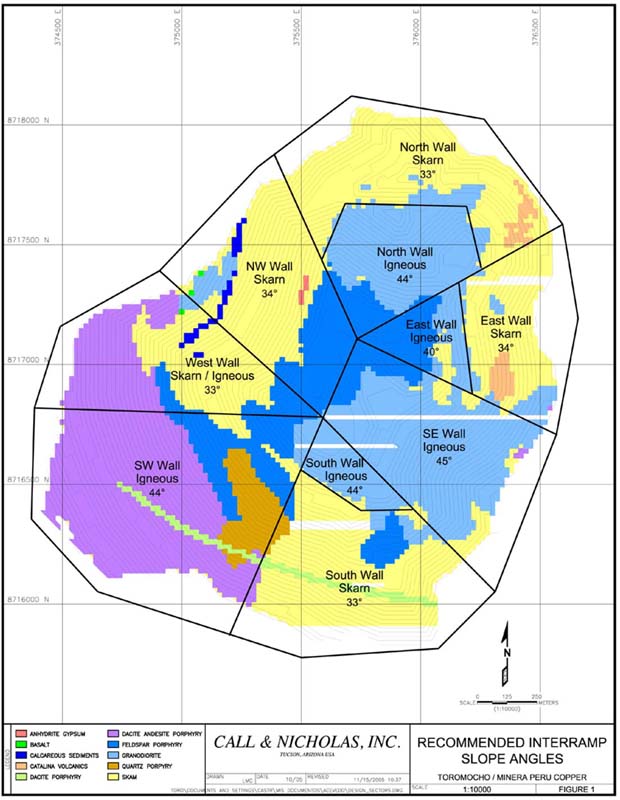
Figure 1.5.3c
 |
|
 | ||
| Page 30 of 81 |
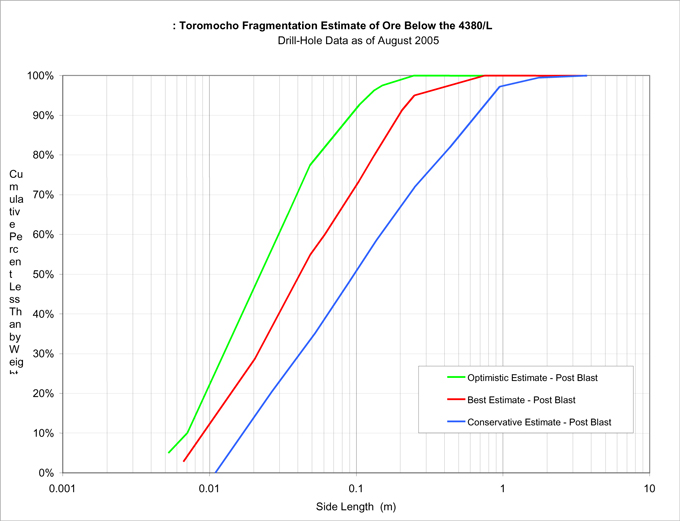
Figure 1.5.3d
 |
|
 | ||
| Page 31 of 81 |
| 1.5.4 | Hydrology |
(Extracted from Xxxxx X. Xxxxxxxxxx & Associates, Inc. Report, dated January 11, 2006)
Minera Peru Copper S.A. (Peru Copper) Toromocho Project is located adjacent to the town of Morococha, Peru, in the Morococha Mining District, at an altitude of 4,600 meters above sea level. Toromocho Project management presently estimates that at a mining rate of 150,000 tonnes per day, water supply demand for the Toromocho Project will be about 1,100 liters per second (L/s) or about 35 million cubic meters of water per year (m3/yr). Potential groundwater and surface water supply for Toromocho is limited by physical constraints, and by legal, environmental, and cultural constraints. This preliminary assessment focuses on physical water availability.
Average annual rainfall including water content of snow at Morococha is about 840 millimeters (mm). A rainy season usually extends from December through March; precipitation during this 4-month period is approximately 56 percent of annual rainfall. Lake evaporation is estimated to be about 1,100 mm per year. Average daily temperature ranges from about 3 to 14 degrees Celsius in summer months to about -4 to 20 degrees in winter.
Nearly all groundwater in the immediate area of Toromocho Project is intercepted by the Kingsmill Drainage Tunnel; groundwater resources physically available to Toromocho include discharge from this tunnel. The drainage tunnel occurs beneath Toromocho Project and discharges to the Rio Yauli about 8 Km east from Morococha; average recorded discharge from the mouth of the tunnel is about 1,250 L/s or about 39 million m3/yr. Recorded discharge from the tunnel ranged from about 790 to 2,200 L/s in the period from January 1996 through October 2005. Average recorded discharge from the Kingsmill Tunnel is about 113 percent of estimated water demand from Toromocho Project.
Additional recognized but non-quantified groundwater resources are physically available in areas marginal to the immediate area of Toromocho Project, such as groundwater stored in karstic limestone strata near Tuctu and near planned tailings impoundments located in the Rio Rumichaca basin south from the Toromocho Project. The Rio Rumichaca valley is tributary to Rio Yauli. Groundwater discharge from these recognized but non-quantified sources does not report to the Kingsmill Tunnel.
Laguna Huacracocha and Laguna Churuca occur adjacent to Toromocho Project and adjacent to Morococha. Combined capacity of the lakes is about
56 million cubic meters (m3); more than 90 percent of the available storage occurs in Laguna Huacracocha. The combined storage volume is about 160 percent of estimated annual water demand for Toromocho Project. Annual and seasonal inflow to the lakes ranges widely and in many years is reported to be sufficiently small that no lake overflow occurs at the outlets. If Xxxxxxx Huacracocha and Churuca would be used as sources of water for Toromocho, natural inflow would require augmentation.
 |
|
 | ||
| Page 32 of 81 |
Presently estimated water demand for Toromocho Project and presently quantified potential sources of water supply are summarized as follow:
| Estimated Toromocho Water Demand | 1,100 L/s | 35 million m3/yr | ||
| Groundwater, average physically available from Kingsmill Drainage Tunnel | 1,250 L/s | 39 million m3/yr | ||
| Lake Storage, capacity physically available | 56 million m3 | |||
Chemical quality of water from streams is generally good with approximately neutral pH. Water from Laguna Huacracocha and Laguna Churuca is acidic. Water discharge from the mouth of Kingsmill Tunnel is acidic and contains large concentrations of dissolved metals.
 |
|
 | ||
| Page 33 of 81 |
| 1.5.5 | Concentrator |
Metallurgical (Extracted from Minerals Advisors Group Report, November 2005)
Minerals Advisory Group (MAG) has provided metallurgical consulting and supervisory services to Peru Copper Inc. (PCI) since November 2004. MAG was assigned the responsibility of recommending and implementing a program to improve the metallurgical response of Toromocho ores and develop engineering data to be used in the production of a Toromocho Feasibility Study. Physical testing and analyses have been performed by METCON Research, Xxxxx Research, Pocock Engineering and Contract Support Services, Inc. The MAG Summary of Metallurgical Investigations draws together the testwork conducted for Peru Copper including work completed by METCON prior to the submission of a 43-101 document in August 2004. Actlabs, Inc. of Tucson was used almost exclusively as the assay lab of choice in order to maintain continuity in assays.
Toromocho ores have been studied by Cerro De Pasco, CENTROMIN and Peru Copper over a period from about 1968 though 2005. The early work resulted in a Kaiser Engineers Feasibility Study. This Feasibility Study has been made available to SNC Lavalin (SNC-L) for review and study. Peru Copper has developed, through its consultants, ore specific metallurgy and engineering parameters to supplement the Kaiser Engineers base data. Historical metallurgical testing demonstrated copper recoveries of about 85% and final copper concentrate grades of about 22-28% from a conventional flotation process.
Crushing and grinding parameters have been developed for Toromocho materials and specific energy consumptions projected through conventional Bond work index determinations and through XX XxxXxx projections. Laboratory testing demonstrated a rougher flotation grind P80 of about 106 to 125µ depending on the composite material to be ground and a cleaner flotation P80 of about 40µ.
Flow sheet development at METCON yielded a conventional flotation process that includes three flotation cleaning stages and the use of sodium carboxymethylcellulose (CMC) to depress naturally floating silicate minerals if necessary. Composite materials representing the Toromocho resource were used to allow the quantification of copper, silver and molybdenum metallurgy. Lock cycle testing of these composite materials and open cycle testing of a second set of composite materials support an average copper recovery of 89.5% and at an average copper grade of 26.5%. From the same tests silver recovery is projected to be about 56.5% and molybdenum recovery about 52.3%. These projections are based on the assumption that the composite materials tested are metallurgically representative of the mineable Toromocho ore. Molybdenum metallurgy continues to be studied at METCON to better define the recovery process.
 |
|
 | ||
| Page 34 of 81 |
METCON produced copper concentrates and tailings products from composite materials that were used to develop engineering data to be used for the sizing of tailings thickeners, concentrate thickeners and concentrate filters. Tailings rheology was also developed for use in the design of a tailings disposal system.
Two potential sources of fresh water (Laguna Huacracocha and Kings Mill Tunnel outflow) for the proposed Toromocho operation were tested to demonstrate process amenability. Generally both water sources appear to be suitable in the flotation system if treated prior to introduction to the process water system. A pH 10.5 water treatment with lime in the tailings thickener was simulated in the laboratory and waters thus treated introduced into the flotation circuit. Further study of local waters will be necessary as more information becomes available about the purity of waters available for introduction to the milling system.
The Toromocho concentrator is designed to process 150,000 tpd of ore with an average grade of 0.53% Cu and 0.019% Mo (see Table 1.5.3c).
The copper concentrate produced from this plant averages 26.5% Cu at a recovery of 89.5%. The molybdenum concentrate grade and recovery are 50% Mo and 52.3% respectively. Moly recovery was adversely affected by the presence of the talc. This led to the design of a talc rejection circuit which, on further analysis, could not be economically justified, owing to the limited amount (about 8.8%) of the ore body that is contaminated with talc Additional work is in progress to improve overall moly recovery for Toromocho.
The concentrator design is based on 365 days per year, 24 hour per day operation with an overall plant availability of 92%. The site for the concentrator was determined from a trade-off study considering three different plant locations. The preferred location for the concentrator was established based on a fixed site for tailings impoundment facilities in a valley south of ore body (Quebrada Tushurunco) directed by PCI. The tailing impoundment site is located at higher elevation than the open pit mine. This requires that the crushed ore from the mine be transported uphill to the concentrator coarse ore stockpile via an approximately 2 km long conveyor that is routed through a tunnel connecting the two separate areas. It is believed that significant economic benefits over that indicated in this study can be achieved if a new siting study for the concentrator and the tailings impoundment facilities is conducted, considering the impact of all relevant elements on the capital and operating costs as well as the corresponding environmental and public issues. See drawings 931-000-45PL-001 and 002.
 |
|
 | ||
| Page 35 of 81 |
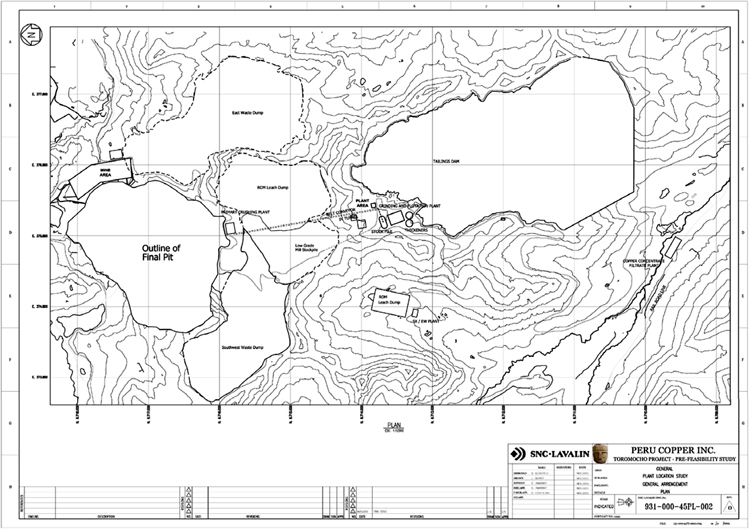 |
 |
|
 | ||
| Page 36 of 81 |
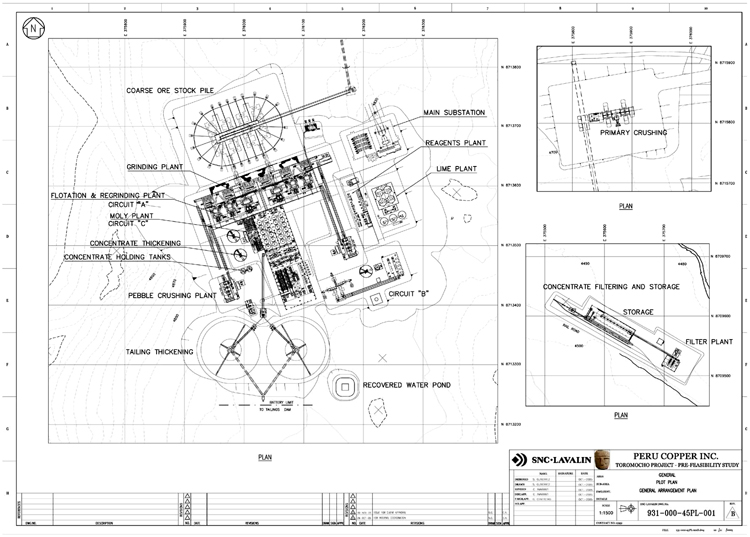 |
 |
|
 | ||
| Page 37 of 81 |
Plant operations are controlled remotely from a central control room. The process control system includes CCTV to make this possible and is designed to operate, monitor and control the process facilities and associated systems in a safe, efficient and economical manner. The control system is based on DCS and provides redundant processing and communications systems. Field instrumentation includes on line analyzers to enable monitoring and control of critical process variables.
Process Description
The process flow sheet is shown in the schematic form on figure 1.5.5. Two 62in x 75in primary gyratory crushers, operating in parallel, are provided to reduce minus 40in ore to minus 12in. Each crusher is powered by a 600 hp motor. The primary crushers are fed from separate truck dump hoppers that receives the discharge from 330 st capacity mine haul trucks. Each crusher discharges into a xxxxxx, from which the ore is withdrawn by a belt feeder which in turns feeds onto a 72 in. wide x 2,368 m long belt conveyor that discharges onto a 150,000 tonne live capacity SAG mill feed coarse ore stockpile.
Ore is withdrawn from the coarse ore stockpile and fed into two (2) parallel 40 ft dia. X 24.5 ft long SAG xxxxx, with each unit powered by a 29,000 hp gearless drive. Each SAG mill discharge is screened and the coarse material is crushed in two (2) dedicated MP-1000 pebble crushers (1000 hp) operating in open circuit. The crushed pebbles are returned to the corresponding SAG mill. The pebble crushing circuit is designed to permit, if required, the return of the crushed product to the corresponding ball xxxxx that follows each SAG mill to provide process flexibility. The product from each SAG mill discharge screen is fed to two 24.5 ft dia. X 37.5 ft long ball xxxxx, operating in parallel. Each ball mill is powered with a 16,000 hp gearless drive and is operated in closed circuit with 10-33 inch dia. type G-max cyclones.
 |
|
 | ||
| Page 38 of 81 |
Figure 1.5.5
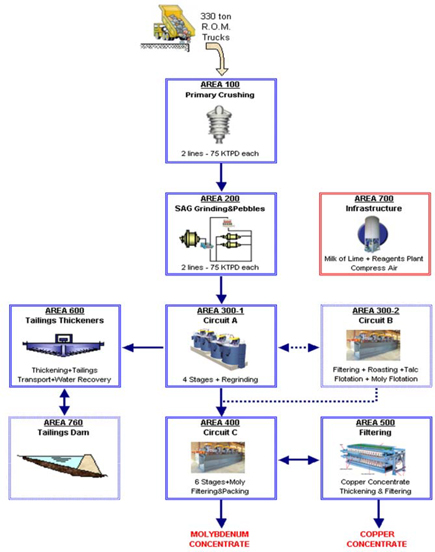
 |
|
 | ||
| Page 39 of 81 |
The overflow from the ball mill cyclones is processed in the flotation circuit which consists of rougher flotation; regrind of rougher concentrates; first, second and third cleaners; and cleaner-scavenger flotation stages. The major equipment included in the flotation circuit are:
| • | Four (4) lines of rougher flotation cells, with each line consisting of six (6) cells, each with a capacity of 8,900 cu. ft. (252cu.m). |
| • | Four (4) regrinding circuits, with each line including one (1) 1,500 hp vertical mill in closed circuit with ten (10) 15 in diam.(380mm) cyclones. |
| • | Two (2) first cleaner lines with each line consisting of five (5) 4,500 cu. ft. (127cu. m) in a 1-2-2 arrangement. |
| • | One (1) second cleaner line consisting of five (5) 4,500 cu. ft. (127cu. m) in a 1-2-2 arrangement. |
| • | Three (3) 215 sq. ft (20 sq. m) third cleaner column cells. |
| • | Two (2) 3,000 cu. ft. (85 cu. m) cleaner-scavenger cells. |
| • | One (1) 65 ft dia.(20 m.) Cu-Mo bulk concentrate thickener. |
The bulk Cu-Mo concentrate from the thickener is fed into the copper-molybdenum separation circuit. The separation takes place in six stages of flotation. The final molybdenum concentrate is thickened, filtered in a 27 sq. ft. (2.5 sq. m) vertical filter press and dried in a 60 tpd capacity multi-disc dryer. The dried molybdenum concentrate is then packaged in one tonne capacity maxi-bags. The copper concentrate is thickened in a conventional 20 ft. diam. (6 m) thickener located at the concentrator site.
The thickened concentrate is stored in two (2) 21,200 cu. ft (600 cu. m.) capacity holding tanks and transported via gravity flow in a 6 in. diam. (150 mm) x 4.2 km. long concentrate pipeline to the filter plant located at the rail head, approximately 5 km. to the south of the concentrator and 11 km east of Ticlio. The thickened concentrate from the pipeline discharges into a 6,350 cu. ft (180 cu. m.) capacity receiving tank and is subsequently fed to two (2) 3,800 sq. ft. (360 sq. m.) vertical filter presses which are housed in a filter building. The de-watered concentrate, at approximately 8% moisture, is stored in a 10,000 tonne capacity enclosed storage building. Concentrate is withdrawn from the building with front end loaders and loaded onto a belt conveyor that loads the rails cars for transport to Callao. The filtrate from the filter presses is clarified and pumped to the tailing impoundment.
The rougher and cleaner scavenger tails are thickened in two (2) 330 ft. (100 m.) high rate thickeners. The thickened tailings then flow by gravity to the tailings impoundment facility. The tailing thickener overflow and the reclaim water from the tailing dam are collected in a pond located near the tailing thickeners and returned to the process water pond.
The reagent circuit includes the installations required to receive and store lime as well as the systems to prepare, store and distribute milk of lime. The reagent circuit also includes the systems to receive, store, prepare and distribute all the reagents required (including collectors, frothers, diesel fuel, flocculants and the like) to process the Toromocho ore.
 |
|
 | ||
| Page 40 of 81 |
| 1.5.6 | Tailings Dam |
(Extracted from Xxxxxxxxxx Xxxxxx Harza Report, October 2005)
Prior to selecting the current tailings site, various sites in the region were analyzed. Criteria for final site selection included integrity of dam (stability), effects on public perception, distance and elevation relative to mill, dam fill quantity, drainage catchment area, and potential for impoundment seepage.
The specific project objectives for the embankment design is to store approximately 1 billion tonnes of tailings for a production rate of 150,000 tonnes per day and meet the following requirements:
| • | Satisfy internationally accepted stability criteria for embankment construction in high a seismicity area |
| • | Minimize risk of seepage into the environment |
| • | Manage all surface water within the drainage basin to provide containment and/or a controlled release consistent surface water quality drainage standards and hydraulic design criteria. |
| • | Utilize locally available material to provide cost effective construction without compromising safety |
| • | Satisfy all Peruvian regulatory requirements associated with construction of the TSF |
The selected site is located approximately 5 km southeast of the proposed Toromocho project pit, along the Quebrada Tunshuruco Valley. Relative to landmarks and existing public facilities, the site is located north of the railroad tracks that go from Ticlio to Yauli and forms part of the headwaters of the Rumichaca River. The valley is located between the Viscacharonga, Huruya Punco and Lauricocha peaks (see Drawing 2).
 |
|
 | ||
| Page 41 of 81 |
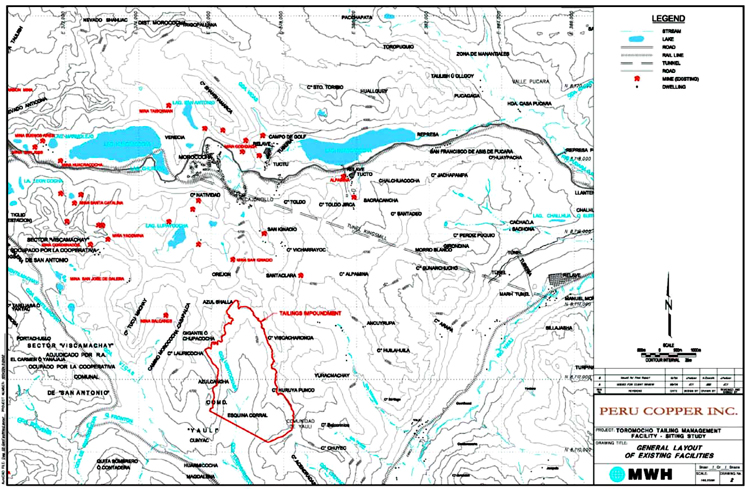 |
 |
|
 | ||
| Page 42 of 81 |
Site Investigation
The majority of rock exposed in the valley is limestone. Karst topography normally occurs in limestone. Because of the abundance of limestone in the Peruvian Andes, this has been an issue at several tailings facilities. The Formation present near the mouth of the valley is the Jumasha Formation, which is particularly known to contain karst features and some notable cave systems. In addition to the presence of limestone, there are significant lacustrine deposits in the valley bottom.
The valley at the proposed tailings site appears feasible for tailings deposition based on the geologic reconnaissance provided recommended engineering measures are implemented. Two areas of possible geologic concern were noted. These are the subsurface geology of the Jumasha Formation in the area of the proposed dam and along the southern portion of east ridge that forms the impoundment. As mentioned previously, the Jumasha Formation is a known to have karst features in Peru. Indications of limestone solubility were observed in minor surficial features, but no substantial indications of subsurface karst were observed. While this suggests that a karst system that could affect the tailings system is not likely present, it does not preclude the existence of karst at the depth of the water table. Karst often occurs at the water table (phreatic surface).
Another concern is the presence of deep lacustrine deposits within the footprint of the dam. These will impact the stability, settlement and seepage rates of the dam; therefore, they will need to be removed.
Drilling was completed to characterize the soils, bedrock, and piezometric conditions within Tunshurucu valley and determine the feasibility of constructing a tailings impoundment in the valley. To this end a total of fourteen holes were drilled at the proposed site. Five holes were drilled along the centerline of the proposed tailing dam. Another two holes were drilled downstream of the centerline, along the center of the valley. Two holes were drilled within the footprint of the main dam in order to confirm geology in the area of the limestone ridge at the bottom of Site. Another hole was drilled within the footprint of the saddle dam to confirm the geology in that area. In addition three holes were drilled in areas, identified in the geologic survey that showed signs of irregular erosion or carbonate dissolution. All drilling was conducted between August 6, 2005 and October 7, 2005.
Water pressure tests were performed in bedrock to determine the in-situ permeability of the bedrock in the region. The results of the packer testing indicated bedrock permeability ranged from 1x10-3 cm/sec to 1x10-5 cm/sec. This data indicates the grouting may be required to minimize seepage from the impoundment.
Piezometers were installed in thirteen of the borings, in order to characterize the groundwater conditions within Site. Initial readings taken on the piezometers indicate that water levels range from 50 m below ground surface and three of the piezometers exhibited artesian conditions.
 |
|
 | ||
| Page 43 of 81 |
Laboratory testing was performed on a number of the samples taken in the field during the geo-technical field investigation as well as the construction materials survey. Laboratory analyses were performed at Pontificia Universidad Catolica del Peru in Lima, Peru. The testing verified that the lacustrine deposits in the valley bottom are extremely wet and weak.
Seismic work was performed with mechanical impacts to comply with shallow depth penetration requirements. The geophysical survey confirmed the presence and areal extent of very soft lacustrine deposits identified during field mapping and drilling.
For starter and ultimate dam see drawings 7 and 8.
 |
|
 | ||
| Page 44 of 81 |
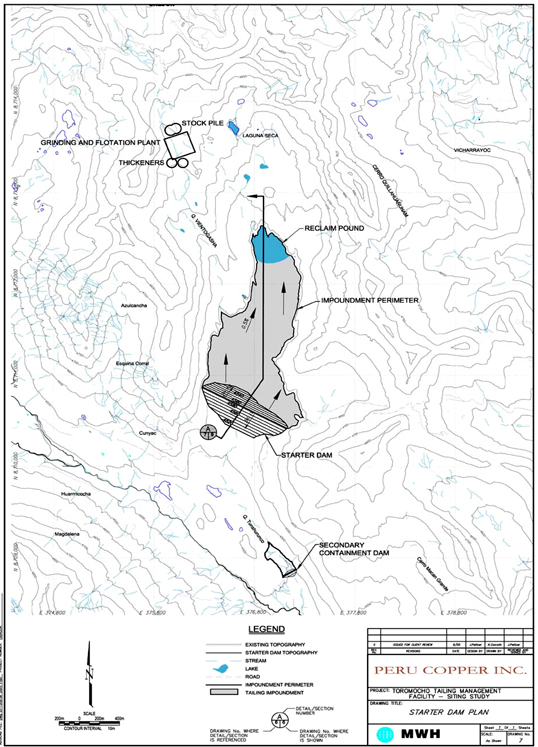
 |
|
 | ||
| Page 45 of 81 |
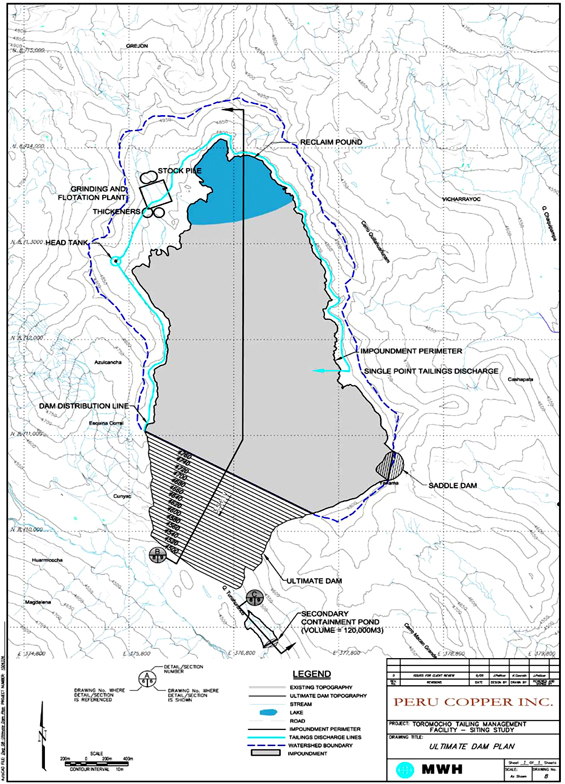
 |
|
 | ||
| Page 46 of 81 |
Engineering Analyses
Engineering analyses were completed to aid in the design of the embankment and the impoundment. These analyses consisted of the following topics:
| • | Tailings Material Balance: This analysis indicates that a total of 19.1% of tailing underflow material is required to build the sand dam over the life of the project. Currently there is an expected 17.5% underflow material available with the current tailings grind. This indicates that there is a potential shortage of tailings underflow to construct the sand dam. This shortfall of sands could be addressed by coarsening the grind or steepening the downstream slope of the dam or a combination of both. |
| • | Seepage Analysis: Seepage from the impoundment is expected to be minimal due to the low permeability of the tailing. Seepage is expected to diminish over time because of the increase in thickness of the low permeability tailing and increase in length of the tailing beach from the dam. Based on the design performed, the starter dam, sand dam, and dam blanket drain is expected to capture most of the seepage from the impoundment and through the dam. |
| • | Water Balance: The conceptual water balance shows that through the first year there will be 2,508 m3/hr of water available for reclaim and in the final year there will be 2,690 m3/hr of reclaim water available. These reclaim values result in a slight increase in decant pond volume by the end of year one and a slight decrease in decant pond volume through the final year. |
TABLE ES.1
RESULTS OF STABILITY ANALYSIS
| Circular Failure |
Block Failure | |||||||
| Section |
Static |
Pseudo-static |
Static |
Pseudo-static | ||||
| Starter Dam |
2.65 | 1.53 | 2.56 | 1.67 | ||||
| Final Dam |
2.29 | 1.27 | 2.29 | 1.27 | ||||
Embankment Design
Construction of the ultimate tailing embankment is planned to occur in a phased manner to help control capital costs prior to the start of the tailing deposition operations. Therefore, the construction of the ultimate tailing embankment is separated into the following phases:
| • | Phase I- Capital Construction: Construction of the design components prior to the start of the tailing deposition operations. |
 |
|
 | ||
| Page 47 of 81 |
| • | Phase II- Operational Construction: Construction of the design components during the tailing deposition operations. |
During Phase I, the following tailing embankment design components will be constructed:
| • | Starter rockfill dam to store overflow tailing materials during approximately the first year of operations as the tailing embankment is being constructed to the crest of the starter dam using underflow tailing materials. |
| • | The initial portion of a seepage collection system to collect and pump-back the seepage from the overflow and water that drains from the underflow tailing materials. |
| • | Reclaim pond pump-back system |
| • | Tailing delivery system to the cyclone station |
| • | Cyclone station and underflow and overflow discharge system |
During Phase II, the following tailing embankment design components will be constructed.
| • | Tailing embankment (compacted underflow tailing materials) to retain the overflow tailing materials |
| • | Remaining portions of the seepage collection system |
| • | Moving or relocation of reclaim barge and pump-back system |
Tailings Delivery and Water Reclaim System Design
Tailings from the thickeners go to tailings dilution system and classification system (sand and slimes). A separate line without dilution goes to the southeast side for discharge directly into the impoundment.
When tailings go to the classification system, they must be diluted to a solid content of 45%: This water is added in a dilution tank on the right abutment of the dam. These dilute tailings are conveyed to the cyclones for classification. In this process, sand and slimes are obtained. And where the sand is distributed on the downstream face of the dam and slimes on the upstream face.
Only two of the three cyclone batteries will operate simultaneously.
The water reclaim system includes the following items:
| • | Two water recovery towers in the impoundment area; |
| • | A reclaim water pond near the tailings thickeners; |
| • | A classification system water tank above the cyclone dilution tank; |
| • | Pipelines from the towers to the reclaim water pond; and, |
 |
|
 | ||
| Page 48 of 81 |
| • | Pipelines from the reclaim water tank to the classification water tank and cyclones. |
Two water recovery towers will be installed, the second one located well above the initial pond. The second tower will serve as a booster station for the first years of operation. When the water surface reaches the second tower’s location, the sump will be modified to allow water intake and the first water tower will be taken out of service.
| 1.5.7 | ROM Xxxxx SX/EW Plant |
(Extracted from Minerals Advisory Group Scoping Report, Oct. 2005, and Site Location and Heap Xxxxx Study, June 2005.)
Heap xxxxx operations would utilize the valley just west of the proposed concentrator and tailings dam. The associated SX-EW facility is located south of and adjacent to this site.
Concept of Operation
The total ROM heap xxxxx ore amounts to 156 million tonnes. Of this amount, about 40% will be delivered directly from the mine and 60% will be stockpiled. Ore is withdrawn form the stockpile beginning in year 5 and as needed from then on to supply the heap xxxxx daily feed.
Annual tonnage to be leached is about 8.2 million tonnes, or 22,500 tons per day. The xxxxx pad will be constructed in four 275, 000 square meter segments, one segment in pre-production and others in years 6, 12 and 18.
The cost for the re-handling and hauling from the ROM stockpile area and to the xxxxx pad are included in the operating cost.
A flow rate of 10 l/sq mt/hr (.004 gpm/sq ft) was selected to initially irrigate the heap. As the heap becomes saturated, the solution flow builds to 11,500 gpm net after evaporation, and reports to the PLS pond. Because of the low ore grade, the solution would be re-circulated onto the heap until the PLS tenor reaches about 2 g/l. At that level a bleed stream of 4700 gpm would be pumped to the nearby SX plant. Raffinate from SX would return to its respective pond.
Copper recoveries were assumed to build from an initial 30% in the first year of operation to an average of 60% in year 3.
It is important to note that assumptions made for this analysis are based on previous xxxxx testwork done by Cerro de Pasco and Centromin. Currently a detailed column xxxxx test program is being carried out to confirm assumptions made for this study.
It has also been assumed for this study that acid for leaching will be available from La Oroya.
 |
|
 | ||
| Page 49 of 81 |
| 1.5.8 | Infrastructure |
Toromocho Project area is beside the current Central Highway (Carretera Central), which is the public road to connecting the area with Lima and Callao.
Access to the general area (Managers Camp) will be from Central Highway.
Main access to plant will be from the public road to the main access control gate, scale and parking area. This two lane paved road will cross through the mine services area, primary crushing and concentrator plant. A dirt road will be constructed between the concentrator and the filter plant to allow for easy access to the filter plant and the concentrate pipeline.
Electrical power for the project is to be provided from the 220 kV National Interconnected Electrical System (SEIN) grid located in this area of Peru (see Figure 1.5.8.a). Power is tapped from the 220 kV substation located at Pachachaca and transmitted to the site via a 9 km. long single circuit transmission line. A single power transformer 180/200 MVA capacity 220/33 kV is located at the main substation located near the concentrator. Power is distributed from the main substation to the project facilities via 25 unit substations and 9 electrical rooms. The transmission line from Pachachaca is to be provided by the project, and the operating cost is reflected in the unit power rates used in this study. The final power rates need to be negotiated with either and/or both the relevant Peruvian generating and distribution companies.
 |
|
 | ||
| Page 50 of 81 |
Figure 1.5.8 a
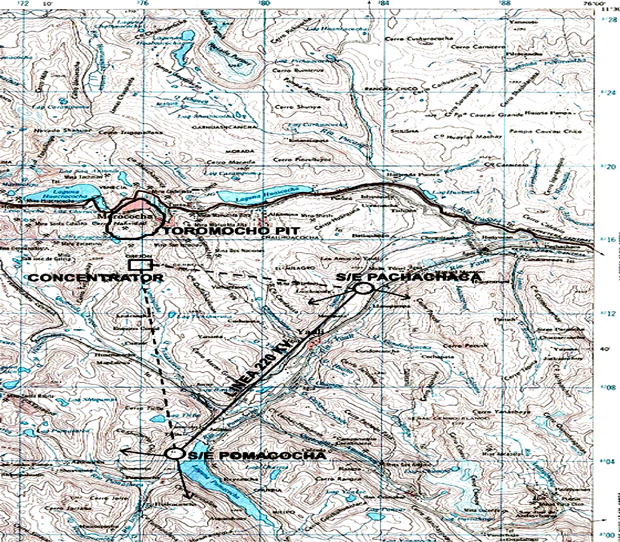
 |
|
 | ||
| Page 51 of 81 |
Water supply
The fresh water requirements are based on a total water consumption of 800 l/s.
As directed by PCI, water is assumed to be supplied from the following sources:
| • | 400 l/s from xxxxx located in the Huacracocha Lake area. Water from this source is assumed to have a pH of 7-8. |
| • | 400 l/s from the Kingsmill tunnel discharge. This water requires treatment prior to use and would have a pH of 7-8 after treatment. |
The Huacracocha pumping station is assumed to be located 5 km. north west of the concentrator at an elevation of 4,600 m.a.s.l.. Water from this pumping station is delivered to a 50,000 cu. m . fresh water pond located north of the concentrator at an elevation of 4,900 m.a.s.l. Two lines are provided to transport water from Huacracocha to the fresh water pond with a separate 1,700 hp pump installed on each line. The intake for water from the Kingsmill tunnel is located approximately 9 km. east of the concentrator at an elevation of 4,000 m.a.s.l.. Water from the tunnel will be treated in a plant located at the tunnel discharge and pumped subsequently to the fresh water pond. Since there is a 900m difference in elevation between the water treatment plant and the fresh water pond, six stages of pumping is required to transport water to the pond. This requires 1,600 hp for that each pumping station to deliver water at its destination. At the start of the operations, all three lines feeding the fresh water pond are required to operate the plant as there will be no (or a very reduced rate) reclaim water initially. When the reclaim water system becomes fully operational, only two fresh water lines need to operate.
Infrastructure Buildings
Concentrator Area
This area is provided with the following buildings:
| • | Concentrator office |
| • | Maintenance shop |
| • | Concentrator warehouse |
| • | Metallurgical and Chemical Assay Laboratory. |
Mine Area
This area is located near the edge of the final pit with ready access from the Central Highway. The buildings and installations provided in this area includes:
| • | Truck shop |
| • | Mine truck washing facilities |
| • | Fuel station |
| • | Geology and mine engineering office |
| • | Geology sampling building and storage yard |
| • | General administration office |
| • | First aid service and fire station |
| • | Access control building including weigh scale |
| • | Potable water and sewage treatment plants |
 |
|
 | ||
| Page 52 of 81 |
General Services Area
This area will be located at a place to be defined in the next engineering phase and includes the following facilities:
| • | Management and superintendent housing |
| • | Guest house |
| • | Management dinning hall and recreational club |
As defined by PCI, it is planned to provide xxxxxxx and workers housing in the Morococha area at a site yet to be determined. Furthermore, PCI is in conversations the the housing ministry to establish a program call “Propio Techo-Cero Deuda” – My own house with no debt.
Communications System
A microwave system with repeaters located along the Central Highway is to be provided for communications between the site and Lima. It is planned that the back bone for communications between the various site facilities will be based on fiber optic cable. Telephone and radio systems are provided, as appropriate for on site and off site. Communications storage of corporate data is to be in a main server provided in the main Lima office, with backup servers at the site. Access control and security system are based on utilization of CCTV.
Concentrate Transportation
The Toromocho copper concentrate production is estimated to be approximately 3,200 wt/d or 1,200,000 wt/y. These figures include a moisture content in the concentrate of 8%. Several alternative concentrate transportation systems including truck, rail and concentrate pipeline were studied. From the study, it was determined that the only practical means of concentrate transport from the filtering plant to the port site at Callao is via rail. It is believed that rail transport of concentrate will have the least negative environmental impact as a railroad system with the required transport capacity already exists. The railroad system will require, however, an upgrade of the existing rail bed and communications/ signal system and the addition of rail cars and locomotives. Rail transport of concentrates will require an environmental management plan to mitigate risks and potential emergencies arising from concentrate spills.
Compañia Ferrovias Central Andina S.A. (F.C.A) was granted the concession to administer and operate the central railroad system from the Peruvian government for a period of 30 . years, commencing in 1999. Within the concession contract, the FCA is engaged in a program to carry out the required improvements indicated above. Nevertheless, it recommended that PCI obtain a written commitment to carry out specific improvements to the railroad system, rail cars and locomotives prior to formalizing an agreement for transport the Toromocho copper concentrates. See Figure 1.5.8 b
 |
|
 | ||
| Page 53 of 81 |
Figure 1.5.8 b
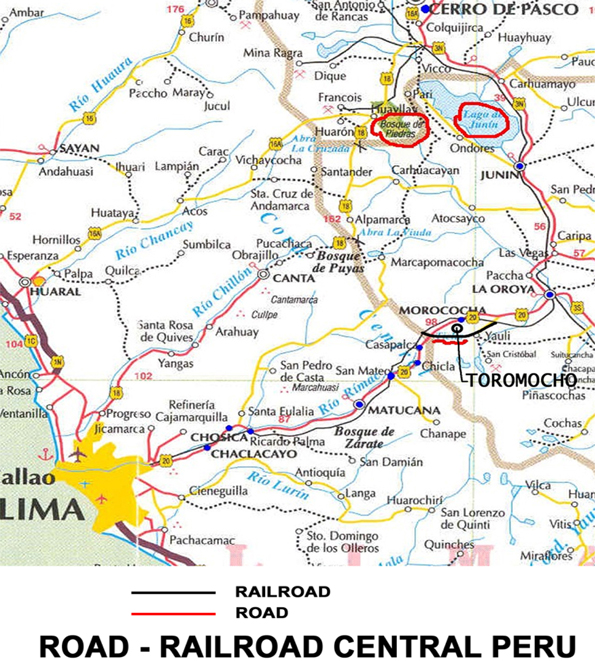
 |
|
 | ||
| Page 54 of 81 |
Concentrate Reception, Storage and Ship Loading Systems in Callao.
At the port site in Callao, two international companies, Perubar (Glencore) and Comin (Trafigura) have the required facilities to receive, store and load ships with concentrates in dock position No 5 (Refers to figure 1.5.8 c). In this area Perubars own a 70,000 sq. m. paved yard to receive, store and load concentrates onto ships. At present, copper and zinc concentrates are stored in the open air, while a 5,000 sq. m. enclosed shed is provided for lead concentrate storage. Comin’s existing installations in Callao include a 102,000 sq. m. paved patio for open air storage of copper and zinc concentrates and a 6,000 sq. m. closed shed for storage lead concentrate. Currently there are common ship loading facilities at Callao to handle about 1.5 million tones of concentrates per year. The existing facilities for receiving, storing and loading of concentrates onto ships at Callao will require considerable improvements to handle Toromocho copper concentrate. For the purposes of this study, it is assumed the cost informed by Perubar-Gencore for concentrate handling and ship loading. See Figure 1.5.8 c
For purposes of this Prefeasibility study it has been assumed that about 25% of the concentrate production from Toromocho will be shipped to La Oroya for smelting and refining, then transported as refined copper to Callao.
 |
|
 | ||
| Page 55 of 81 |
Figure 1.5.8 c
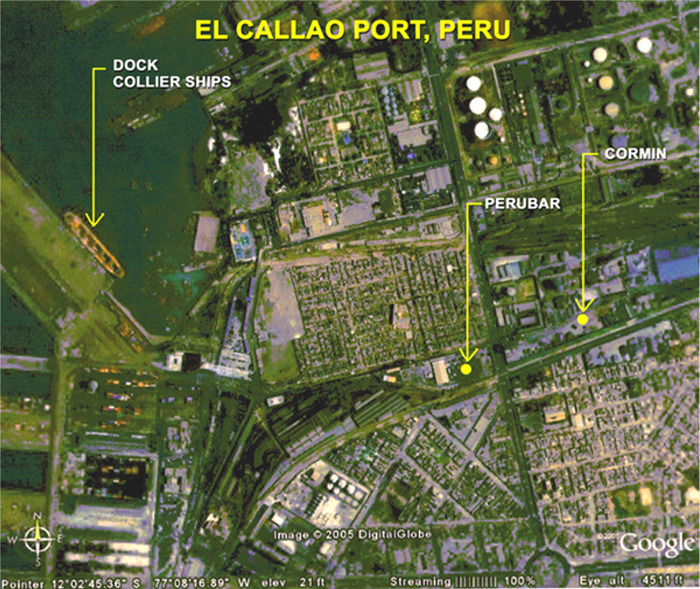
 |
|
 | ||
| Page 56 of 81 |
| 1.5.9 | Environment |
Knight Piésold S.A. as subcontractor of SNC-L developed the environmental analysis for the Toromocho Project Pre-Feasibility Report as requested by Peru Copper Inc. Available environmental baseline information (biological, physical and social) for the project area was reviewed which included an assessment of whether sufficient environmental baseline information is available to develop a project Environmental Impact Assessment (EIA). The review indicated that there is currently no baseline information for air quality, soils, geomorphology, noise and vibrations or landscape within the project area and baseline studies and monitoring should be undertaken for these components. Baseline information exists for surface and underground water, archaeological, socioeconomic and flora and fauna components. However, additional studies and monitoring are recommended to complement existing baseline information.
Potential sources of environmental impacts were identified and the effect of each impact on the environment was evaluated. The preliminary assessment indicated that geomorphology, air quality, water quality and the socioeconomic environment will be most significantly affected by project activities. A preliminary environmental management plan was developed to identify the measures necessary for the proper management of the project’s environmental impacts and risks. In addition to mitigation measures, preliminary waste management issues were identified and a conceptual closure plan was developed. The community relations program within this environmental management plan considers activities developed by Peru Copper for their current community and social programs and incorporates suggestions to improve the program in order to comply with EIA requirements.
A preliminary environmental monitoring plan was developed for meteorology, air quality, water quality, noise and vibrations and flora and fauna components within the project area. The monitoring program will be used to determine the effects of project emissions and mining activity through the measurement of environment components within the project area. This information can be used to adopt appropriate preventative and/or corrective measures in a timely manner in case of negative project impacts. The information gathered during the monitoring program can also be used to design and /or modify the mine closure plan. The preliminary monitoring plan detailed methodology, location of monitoring points, frequency and parameters to be monitored.
Peruvian environmental standards, guidelines and permits relevant to the Toromocho Project were identified in the ‘Environmental Permits’ report. The principal legal issues were related to development and approval of the EIA, Mine Closure or Abandonment Plan and an Environmental Liabilities Closure Plan. Additional permit requirements were also identified. A summary table of relevant permit and legislative requirements is also included in the report.
A preliminary cost analysis was undertaken for environmental studies required for project approval, additional environmental permits and environmental costs for construction and operation stages. The report included a description of project items and their estimated costs. Costs were identified as either capital or operational costs.
 |
|
 | ||
| Page 57 of 81 |
The Final Environmental Conclusions and Recommendations report summarized the main findings of the pre-feasibility environmental analysis. In addition, a timeline was developed to guide Peru Copper Inc. in all activities required for environmental project approval and good environmental management practices.
| 1.5.10 | Community Relations Program |
(Text prepared by PCI, November 2005)
The project is surrounded by several large “communities” which are actually large tracts of land each of which is communally owned by individual groups. The affairs of each community is managed by an elected president and a board of directors. Those communities that will be impacted in some way by the project are the municipalities of Morococha, Yauli, Pucará and San Antonio.
The municipality of Morococha, according to the 2005 census, has a population of 3720 inhabitants. An elected mayor and council oversee the government and administration of the municipality.
The municipality of Morococha is the most affected because the development of the open-pit mine will take place in the area within its jurisdiction. A considerable amount of area will be required for the development of the mine, plant and ancillary facilities creating the need to resettle the population in an area nearby but at sufficient distance to not be affected by the activities of the mine. This area is yet to be created. Yauli, where the proposed tailings disposal facility is to be located is the second community most impacted.
Community Relations Program
A community relations programs has been established by Peru Copper Inc. to:
| • | Create a vision of the future that incorporates the communities impacted by the project. |
| • | Promote collaboration, trust and respect between the Company and the communities. |
| • | Establish an effective two-way dialogue and good relations with all the communities. |
| • | Assist in the promotion of sustainable development in the communities. |
| • | Keep the communities continually informed of the advances and status of the project. |
| • | Receive information from the communities with respect to their concerns about the project. |
 |
|
 | ||
| Page 58 of 81 |
| • | Promote community participation in the decision making processes where the community is impacted. |
| • | Create and execute a plan for the relocation of those living within the immediate impact area of the project. |
Externally the objectives are to identify, understand and manage the key social issues that arise from the relationship between the Toromocho Project and the impacted communities.
Management of the Program
Social Capital Group (SCG), a consulting group with expertise in community relations and population resettlement has been contracted to oversee the program and train community relations staff for the project. XXX is supervised by the President and CEO of PCI. The complete program will include the resettlement of the impacted population, communications and internal affairs and human relations.
ADRA, a non-governmental organization specializes in assisting communities to focus on their futures, has also been contracted. ADRA has more than forty years successful experience with these types of programs.
Resettlement of the Population
The population that will need to be resettled is actually the town of Morococha. The majority of these work for either Argentum (Pan American Silver; PAS) or Austria Duvaz (A-D). While some of the population does live in company owned housing, (either that of PAS or A-D), there are other properties, both residential or commercial, owned by third parties.
Communications
Communications are directed externally to those communities that are impacted by the project. Internal communications are directed towards the staff and workers in order to create and maintain a team-like atmosphere.
External communications regarding the project are directed to the central, regional and local governments, to the public in general, the Catholic Church and the leaders in the economic, social and political sectors.
Besides contact with the individual members of the Morococha population, PCI is hosting communication workshops to further communicate the status and advance of the project as well as to discuss other issues of importance to the communities. These workshops are being conducted with considerable success by Horizonte, a Peruvian consulting firm.
 |
|
 | ||
| Page 59 of 81 |
| 1.6 | Capital Cost Estimate |
A capital cost estimate was prepared for the entire project and the investment was summarized into the following main areas:
| • | Concentrator process plant (150,000 tpd) direct cost (SNC-L) |
| • | Concentrator process plant indirect cost (SNC-L) |
| • | Owner’s cost (Perú Copper Inc.) |
| • | Mine cost (Independent Mining Consultants) |
| • | Tailings dam (Xxxxxxxxxx Xxxxxx Harza) |
| • | ROM leaching and SXEW plant (Minerals Advisory Group) |
All components were integrated into one single estimate.
Methodology
The capital costs were estimated to be within a -10% +25% range with 90% probability of occurrence for CAPEX. No deferred costs in the concentrator plant were estimated.
Owners and mining costs, tailings dam and ROM xxxxx SXEW costs were provided by third parties.
Quantities were developed based on the following Engineering documents:
| • | Site plot plan |
| • | Equipment lists |
| • | Process flow diagrams |
| • | Simplified P&ID’s |
| • | Layout drawings / sketches |
| • | Electrical single line diagrams |
| • | Inroads model |
Major equipment pricing was obtained from budgetary quotations and minor equipment unit prices were obtained from in-house databases. Erection man hours were assigned according to SNC-L experience with recent similar projects. Material quotations for the main commodities were obtained from local suppliers and installation man hours were obtained from in-house data.
Mass earthwork quantities were calculated using the Inroads model. Process buildings quantities were sized according to the process equipment space required and design quantities were estimated based on similar designs executed recently. Offices, warehouses and housing complex were estimated based on similar mining projects and sized according to the space required in each case.
 |
|
 | ||
| Page 60 of 81 |
Cost Estimate Summary
The following tables present the capital cost summaries by discipline and facility.
Table 1.6.1, Discipline Summary.
CAPITAL COST ESTIMATE SUMMARY REPORT BY DISCIPLINE
| AREA |
DESCRIPTION |
Labor, C.Eqt. ( k USD ) |
Equipment & ( k USD ) |
TOTAL ( k USD ) | ||||
| D |
DIRECT COSTS |
|||||||
| 1 |
EARTHWORK & SITE PREPARATION |
90,656 | 882 | 91,538 | ||||
| 2 |
CONCRETE |
111,785 | 12,510 | 124,296 | ||||
| 3 |
STEEL |
21,421 | 39,363 | 60,784 | ||||
| 4 |
ARCHITECTURAL |
20,008 | 5,248 | 25,256 | ||||
| 5 |
MECHANICAL |
28,882 | 221,648 | 250,530 | ||||
| 6 |
PIPING |
24,754 | 18,171 | 42,925 | ||||
| 7 |
ELECTRICAL |
20,955 | 36,052 | 57,006 | ||||
| 8 |
INSTRUMENTATION |
2,876 | 14,826 | 17,702 | ||||
| SUBTOTAL - DIRECT COSTS |
321,337 | 348,701 | 670,037 | |||||
| I |
INDIRECT COSTS |
207,491 | ||||||
| SUBTOTAL - DIRECT and INDIRECT COSTS |
877,528 | |||||||
| 17.0% |
CONTINGENCY |
149,500 | ||||||
| 910 |
OWNER’S COST |
87,918 | ||||||
| 910 |
MINE |
209,982 | ||||||
| 10.4% |
OWNER’S COST & MINE CONTINGENCY |
30,930 | ||||||
| TAILINGS DAM (Contingency Included) |
106,377 | |||||||
| XXX XXXXXXXX & SXEW (15,000 t/y) (Contingency Incl.) |
61,800 | |||||||
| TOTAL INVESTMENT CAPITAL COST |
1,524,037 | |||||||
 |
|
 | ||
| Page 61 of 81 |
Table 1.6.2, Facility Summary.
CAPITAL COST ESTIMATE SUMMARY REPORT BY AREA / FACILITY
| AREA |
DESCRIPTION |
Labor, C.Eqt. ( k USD ) |
Equipment & ( k USD ) |
TOTAL ( k USD ) | ||||
| D |
DIRECT COSTS |
|||||||
| 000 |
GENERAL AREA |
2,917 | 6,313 | 9,230 | ||||
| 100 |
PRIMARY CRUSHING, COARSE ORE HANDLING, & STOCKPILE |
79,574 | 41,191 | 120,764 | ||||
| 200 |
GRINDING PLANT |
90,189 | 175,316 | 265,506 | ||||
| 300 |
FLOTATION & REGRINDING PLANT |
27,802 | 47,943 | 75,745 | ||||
| 400 |
MOLY PLANT |
4,075 | 5,793 | 9,869 | ||||
| 500 |
CONCENTRATE THICKENING, FILTRATION & STORAGE |
5,729 | 9,497 | 15,225 | ||||
| 600 |
TAILINGS THICKENING & WATER RECOVERY |
13,705 | 11,689 | 25,395 | ||||
| 710 |
PLANT INFRASTRUCTURE |
25,598 | 196 | 25,794 | ||||
| 720 |
SERVICES |
50,122 | 42,340 | 92,462 | ||||
| 730 |
TRANSPORTATION & PORT FACILITIES |
0 | 0 | 0 | ||||
| 740 |
MINE INFRASTRUCTURE |
21,625 | 8,422 | 30,047 | ||||
| SUBTOTAL - DIRECT COSTS |
321,337 | 348,701 | 670,037 | |||||
| SUBTOTAL - INDIRECT COSTS |
207,491 | |||||||
| SUBTOTAL - DIRECT and INDIRECT COSTS |
877,528 | |||||||
| 17.0% |
CONTINGENCY |
149,500 | ||||||
| 910 |
OWNER’S COST |
87,918 | ||||||
| 910 |
MINE |
209,982 | ||||||
| 10.4% |
OWNER’S COST & MINE CONTINGENCY |
30,930 | ||||||
| TAILINGS DAM (Contingency Included) |
106,377 | |||||||
| XXX XXXXXXXX & SXEW (15,000 t/y) (Contingency Incl.) |
61,800 | |||||||
| TOTAL INVESTMENT ESTIMATE |
1,524,037 | |||||||
 |
|
 | ||
| Page 62 of 81 |
| 1.7 | Operating Cost Estimate |
For the operating cost estimate, SNC-L used the following data:
| 1.7.1 | Concentrator (determined by SNC-L) |
The operation costs includes:
| a) | Labor: Personnel for management, operations and maintenance. |
| b) | Operations Materials: All materials required for normal operation, it means; balls, liners, reagents, lime, fuel, filter cloths, minor materials and personal safety elements. |
| c) | Inputs: power and potable water consumption. |
| e) | Maintenance: All materials, tools and spares parts and the external services requires in the equipment and installations maintenance. |
| f) | Others and contingency. |
| 1.7.2 | Mine |
The operating costs include:
| a) | Drilling |
| b) | Blasting |
| c) | Loading |
| d) | Hauling |
| e) | Auxiliaries |
| f) | Maintenance |
| g) | G&A. |
| 1.7.3 | Tailings Dam (determined by Xxxxxxxxxx Xxxxxx Harza, MWH) |
The operating costs include:
| a) | Labor |
| b) | Materials |
| c) | Power |
| d) | Maintenance |
| e) | Others |
 |
|
 | ||
| Page 63 of 81 |
| 1.7.4 | ROM Xxxxx SX-EW |
The operating costs include:
| a) | Acid consumption |
| b) | Re-handling and haulage cost to move the ROM ore from the stockpile to the xxxxx pad |
| c) | And all labor, materials, power, maintenance and reagents required. |
| 1.7.5 | Smelter Deduct – Metal Content |
Standard deducts for metal content at the smelter were used.
| 1.7.6 | Refining |
Copper price participation for the refinery was included at copper prices above $0.90 / lb.
| 1.7.7 | Other General Costs |
Typical G+A costs were applied. In addition, Peruvian laws requires that 8% of pre-tax income is distributed to workers as profit sharing.
| 1.7.8 | Royalties |
A royalty scheme to Centromin, from when the property will be purchased is included. The royalty is based on a percent of profit, based on a range of copper prices.
| 1.7.9 | Summary of Operating Costs |
The following tables summarize the operating costs.
| ITEM |
US$/t of Ore (Average) |
Source | ||
| Concentrator |
2.92 | SNC-L | ||
| Tailing Dam |
0.22 | MWH | ||
| Mine |
0.903 (per t of material) | PCI | ||
| XXX Xxxxx SX-EW |
2.01 | PCI |
 |
|
 | ||
| Page 64 of 81 |
OTHER COSTS
| Smelter Deducts - Metal Content | ||||
| Copper |
96.50% | |||
| Silver |
10.00% | 12 gr/t | ||
| Molybdenum |
1.50% | 2 lb/t | ||
| Refining | ||||
| Treatment |
70 | $/dmt Cu Conc. | ||
| Copper |
0.07 | $ per lb | ||
| Copper Price Participation +$0 |
0.1 | |||
| Silver |
0.25 | $ per ounce | ||
| Molybdenum |
0.5 | $ per lb | ||
| Concentrate & Cathode | ||||
| Rail Transport - Port |
8.49 | $/wmt conc. & cathode | ||
| Port Handling & Loading |
7.18 | $/wmt conc. & cathode | ||
| Handling Losses Concentrate |
0.50% | |||
| Insurance |
0.08% | of net payable | ||
| Centromin Royalty | ||||
| 0.51% of NSR | Cu <=0.8 | |||
| 1.31% of NSR | 0.8 < Cu <= 1.09 | |||
| 1.71% of NSR | Cu>=1.10 | |||
| 1.7.10 | Mine and Concentrator Manpower Summary. |
To determine the labor costs related with the Mine and the Concentrator, the following organization was used. In the Table and Chart Rol A & Rol B mean people working on a day basis or shift basis respectively.
| VICE PRESIDENCY |
Rol A |
Rol B |
Total | |||
| CEO PRESIDENT GENERAL MANAGER |
13 | 2 | 15 | |||
| OPERATION VP |
1 | 0 | 1 | |||
| MINE MANAGEMENT |
37 | 551 | 588 | |||
| CRUSHING SUPERINTENDENT |
9 | 28 | 37 | |||
| PLANT MANAGEMENT |
60 | 351 | 411 | |||
| MAT.. MANAG.-PLANT & INFRASTRUCTURE |
4 | 26 | 30 | |||
| MATERIAL MANAGEMENT VP |
20 | 6 | 26 | |||
| HUMAN RELATIONS VP |
28 | 16 | 44 | |||
| ADMINISTRATION & FINANCE VP |
14 | 28 | 42 | |||
| MARKETING & SALES VP |
4 | 12 | 16 | |||
| DEVELOPMENT VP |
0 | 0 | 0 | |||
| EXTERNAL SERVICES |
0 | 745 | 745 | |||
| 190 | 1765 | 1955 | ||||
 |
|
 | ||
| Page 65 of 81 |
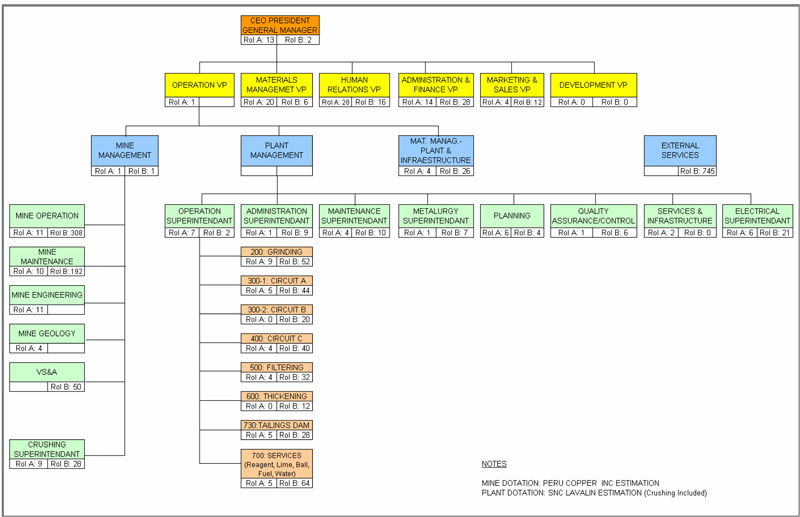 |
 |
|
 | ||
| Page 66 of 81 |
| 1.8 | Initial Economic Evaluation |
Financial Model Overview Description
A financial analysis has been prepared for the Toromocho Project with results described herein and is based on a model devised by SNC-L.
Three financial statements for the project (income statement, cash flow and balance sheet) were generated by entering cost and revenue estimates and assumptions into a financial model based on an MS Excel spreadsheet.
The financial analysis was performed using estimates of revenues, expenses, capital costs and operating costs as described in detail in other sections of this Report. All figures are estimates, calculated using standard accepted methodology. Since the financial analyses are based on estimates, it should be expected that actual performance may vary from these estimates.
Assumptions
The financial analysis was carried out using the following main assumptions for the project:
| • | All amounts are expressed in thousands US dollars; |
| • | IRR and NPV are estimated using the discounted cash flow methodology; |
| • | The financial model assumes the life of the project is a 22 year period of operation after a construction period of 3 years; |
| • | Project is financed by 100% equity, no debt assumed; |
| • | No inflation assumed on revenues, expenses and capital expenditures. |
The detailed assumptions are the following.
Revenues.
The metal prices used are:
| • | $0.95, $1.10 and $1.25 per pound for copper with a premium of $0.05 per pound for cathode copper; |
| • | $6.50 per ounce for silver; |
| • | $7.00 and $10.00 per pound for molybdenum; |
Operating expenses, smelter, refining and shipping costs as well as the Centromin royalty, are summarized in Section 1.7.
 |
|
 | ||
| Page 67 of 81 |
Capital Cost
Capital expenditures are described in detail in previous section of this Report and are summarized as follows:
| Thousand USD | ||
| Mine Capital Cost |
231,785 | |
| Direct Capital Cost |
784,188 | |
| Indirect Capital Cost |
242,840 | |
| Owner, Tailings and ROM Capital Cost |
265,224 | |
| TOTAL |
1,524,037 | |
All values shown above are with contingencies included.
Taxes and Balance Sheet
The basic corporate income tax rate used by SNCL is 30%. A worker’s participation tax of 8.0% is also applied. Capital Cost Allowance (CCA) and accounting depreciation are on a straight line basis using a useful life of 5 years.
Working capital has been establish as follows:
30 days of sales for receivables
30 days of expenses for payables
Minimum cash of $5 M.
Project Returns
A summary of the result of the financial analysis is provided in the Table below. All values are estimates.
The project cash flows are represented by earnings before interest, taxes, depreciation and amortization (EBITDA) less the capital expenditures plus/less changes in working capital less corporate tax paid.
The estimate of the net present value (NPV) of project cash flows is dependent on the discount rate used. The discount rate represents the weighted average actual cost of capital (WACC) for the project. SNCL has estimated NPV using discount rates of 7%, 8% and 9%.
 |
|
 | ||
| Page 68 of 81 |
TOROMOCHO PREFEASIBILITY STUDY FINANCIAL RETURN MATRIX
| Description |
||||||||||||
| Cu, $/lb |
0.95 | 0.95 | 1.10 | 1.10 | 1.25 | 1.25 | ||||||
| Mo, $/lb |
7.00 | 10.00 | 7.00 | 10.00 | 7.00 | 10.00 | ||||||
| Ag, $/oz |
6.50 | 6.50 | 6.50 | 6.50 | 6.50 | 6.50 | ||||||
| IRR, % |
10.7 | 12.4 | 14.6 | 16.0 | 18.0 | 19.3 | ||||||
| NPV, $ millions @ |
||||||||||||
| 7% Discount Rate |
363 | 556 | 804 | 994 | 1,240 | 1,430 | ||||||
| 8% Discount Rate |
245 | 418 | 643 | 814 | 1,037 | 1,208 | ||||||
| 9% Discount Rate |
143 | 299 | 505 | 658 | 861 | 1,015 |
Three year copper price average from Jan 2003-Jan 2006 is $1.30/lb
Base case is $1.10/lb Cu, $10/lb Mo, $6.50/oz Ag and 8% discount rate
Project Financial Sensitivities
The sensitivity analyses were carried out assuming Cu US$1.10/lb, Mo US$10.00/lb and Silver US$6.50/oz, and an 8% discount rate, by measuring the effect of variations (up to ± 20%) on the key elements influencing the internal rate of return (IRR) and net present value (NPV) of the project. The selected key variables for the analyses were:
| • | Metals gross revenues |
| • | Copper price |
| • | Capital expenditures |
| • | Total operating costs |
The sensitivity analysis as shown in the Table below indicate that the IRR Project is particularly sensitive to variations in revenues, and less sensitive to variations in capital expenditures and operating costs.
| 80% |
90% |
100% |
110% |
120% |
|||||||||||
| Gross Revenue |
7.3 | % | 12.1 | % | 16.0 | % | 19.5 | % | 22.7 | % | |||||
| Cu Price |
10.3 | % | 13.5 | % | 16.0 | % | 18.5 | % | 20.7 | % | |||||
| Capital Expenditures |
19.9 | % | 17.8 | % | 16.0 | % | 14.5 | % | 13.2 | % | |||||
| Operating Costs |
18.4 | % | 17.3 | % | 16.0 | % | 14.7 | % | 13.4 | % |
The sensitivity analyses as shown in the table below indicate that the NPV project is particularly sensitive to variations in revenues, and less sensitive to variations in capital expenditures and operating costs (values in Thousand US$).
| 80% |
90% |
100% |
110% |
120% | |||||||
| Gross Revenue |
(61,225 | ) | 386,314 | 813,896 | 1,240,616 | 1,667,335 | |||||
| Cu Price |
211,098 | 528,126 | 813,896 | 1,104,765 | 1,388,673 | ||||||
| Capital Expenditures |
1,021,356 | 917,626 | 813,896 | 710,080 | 605,889 | ||||||
| Operating Costs |
1,115,594 | 964,745 | 813,896 | 663,005 | 511,740 |
 |
|
 | ||
| Page 69 of 81 |
A sensitivity analysis chart showing the relative slopes of the impact of a change in each variable, revenues, capital expenditures and operating costs for the IRR and NPV of the project is provided in the financial model details (see next two figures).
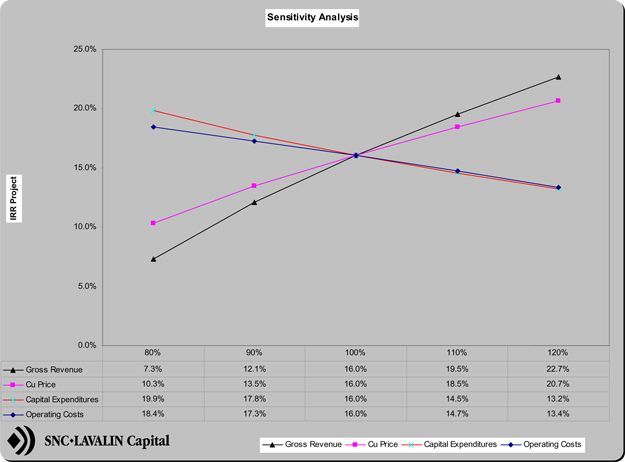
 |
|
 | ||
| Page 70 of 81 |
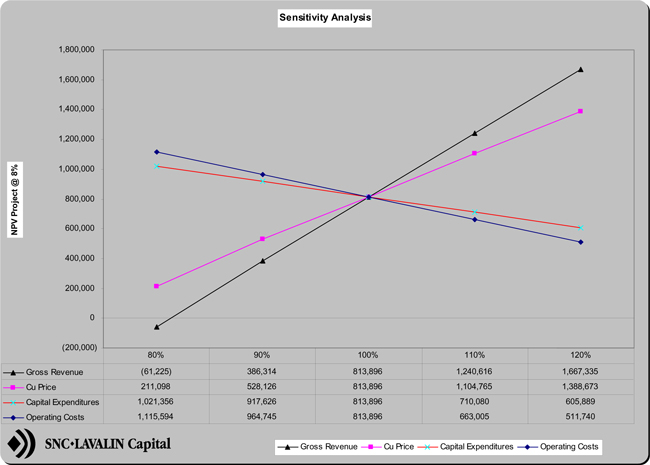
 |
|
 | ||
| Page 71 of 81 |
| 1.9 | Technical Risk |
Risk Analysis
An analysis session was held to identify potential issues that have to be resolved before or during the next engineering phase of the project. These major issues are summarized below.
In principle, no unsolvable risks were identified and it is expected that they all can be solved before or during the next phase of project development.
The major issues detected are the following:
| • | The waste dump design must consider stability related to rainy season. |
| • | Conduct a thorough geotechnical program the next engineering phase. |
| • | The concentrator’s equipment specifications must consider a very dusty environment, because of the location relative to the mine and waste dump. |
| • | Provide Peruvian legal requirements for health and safety issues before next engineering phase. |
| • | Provide policies from the insurances companies related with fire detection and control. |
| • | Develop a HAZOP analyses during the next engineering phase. |
Fatal Flaws Analysis
A fatal flaws analysis was done, and the items identified can be resolved and thus at this time, there are no fatal flaws. The major issues identified were the following:
| • | Proceed with water exploration and confirm water quality from the xxxxx. |
| • | Proceed with additional base line studies so that the Environmental Impact Assessment can begin as soon as possible. |
| • | Initiate conversations with the railway operator to confirm viability and costs. |
| • | Initiate conversation with Callao Port operators to confirm EIS compliance and costs. |
| • | Confirm with the requisite authorities the viability of Tailings Dam location and design. Alternate locations may have to be reviewed. |
| • | Perform pilot and laboratory test for grinding parameters, collective flotation, molybdenum flotation, thickening and filtration. |
 |
|
 | ||
| Page 72 of 81 |
| 1.10 | Project Implementation Plan (PIP) |
For the implementation of the project, three different phases have been considered. The execution of this plan involves the owner of Toromocho and contractors to develop the activities for a success project completion.
These phases are:
| • | Pre-Investment activities. |
| • | EPCM services for process plant (concentrator and SX-EW) and infrastructure. |
| • | Services for mining and tailings dam areas. |
Implementation Plan
Pre-investment Activities
During this period, different activities have been considered, such as discussions with potential contractors for concentrate transportation to port, power supply, services for concentrate handling and ship loading, etc.
Also, metallurgical pilot and laboratory testing must be done, as well as geotechnical investigation for the different areas of the plant.
Following these activities (with an overlap), the next phase of engineering (feasibility study or basic engineering) may be done. During this phase final flowsheets will be developed following the laboratory campaign, layouts, bids for major and long delivery items, P&iDs developed and CAPEX and OPEX will be updated, among others.
EPCM
Once the investment is authorized, the EPCM phase will commence, which includes detail engineering, procurement, construction, commissioning and support for start-up.
The proposal for this phase will require two types of construction contracts: preparation of site and road access and civil-structural, electro-mechanical erection.
The works related to the mine and tailings dam are considered to be done by third parties, and are not considered within the EPCM scope for purposes of this study.
Organization
Pre-investment Activities
In this stage of basic engineering, an EPCM contractor would be selected.
Figure 1.10.1 outlines the organization chart for this phase.
 |
|
 | ||
| Page 73 of 81 |
EPCM
Once authorized the investment, the EPCM contract shall be started. In this stage the majority of resource quantity shall be implemented. The EPCM contractor shall have two organizations, a central office and another at site. The proposed home office and field organization is shown in figure 1.10.2.
For their part, the Owner shall reinforce their resources significantly, so as to be able to interact and coordinate adequately with their primary contractor counterpart of the EPCM.
Scheduling
A master plan is proposed for the following stages of the project. Pre-investment activities of laboratory testing, piloting and the geotechnical program are considered, followed by the basic engineering. At the completion of the basic engineering phase the investment decision would be made.
The Master Plan proposed is shown in figure 1.10.3.
 |
|
 | ||
| Page 74 of 81 |
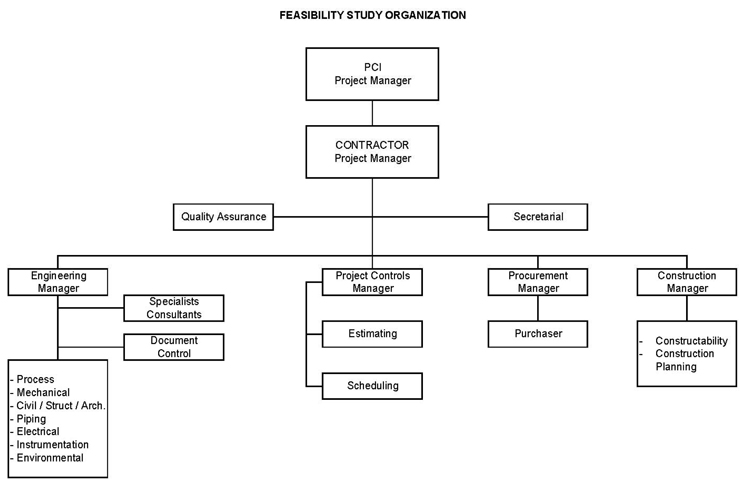 |
 |
|
 | ||
| Page 75 of 81 |
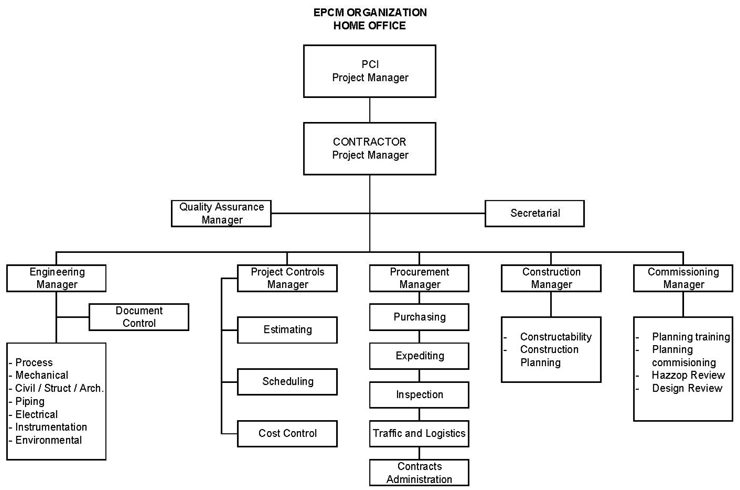 |
 |
|
 | ||
| Page 76 of 81 |
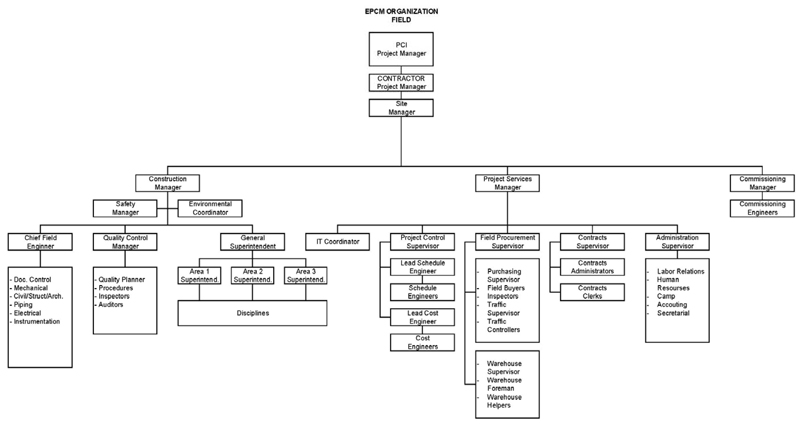 |
 |
|
 | ||
| Page 77 of 81 |
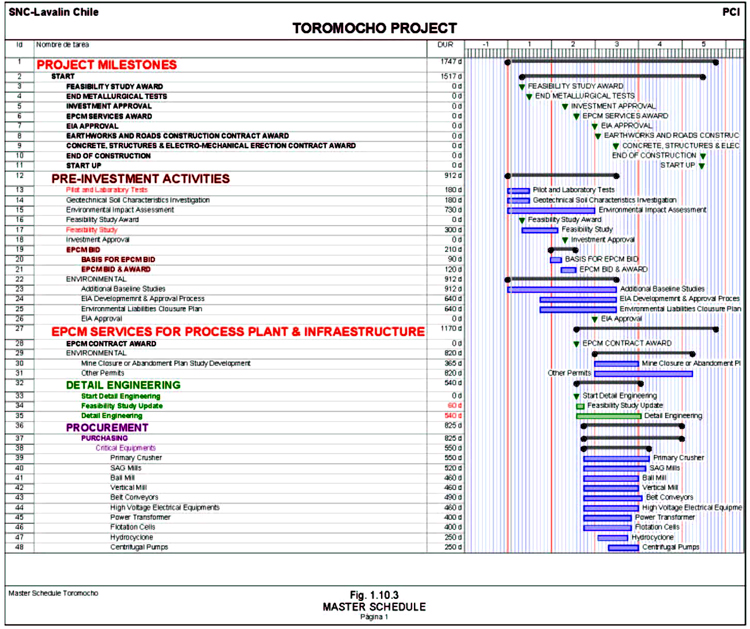 |
 |
|
 | ||
| Page 78 of 81 |
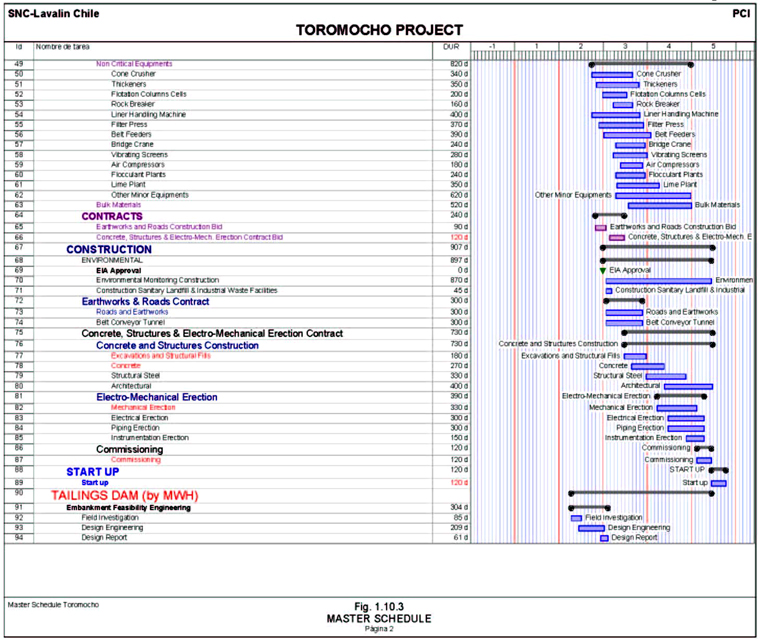 |
 |
|
 | ||
| Page 79 of 81 |
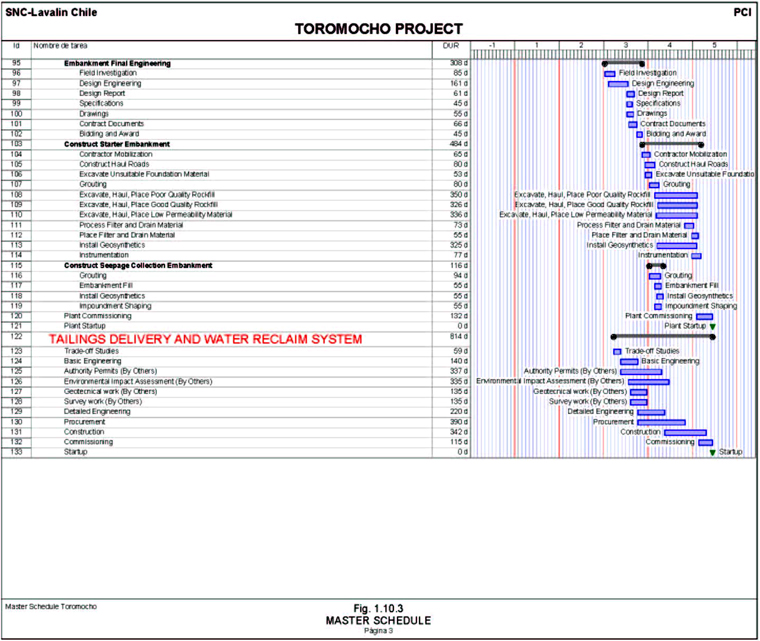 |
 |
|
 | ||
| Page 80 of 81 |
| 1.11 | Conclusions and Recommendations |
| 1.11.1 | Conclusions |
Technical
| • | At this stage of the project development, and with the test-work performed to date as a basis for the design criteria adopted for the study, the project is sustainable from a technical standpoint. Further test-work as well as a metallurgical pilot program will need to be implemented to confirm design parameters used in the study. |
| • | The plant site location chosen for the study was dictated in part by the limited options available to site the tailings impoundment. This contributed to the higher than anticipated capital and operating costs. It is envisioned that additional studies will provide for the optimization of these costs. |
| • | In the absence of reliable geo-technical field data, the study used a conservative approach in establishing the design criteria for civil works. A comprehensive geo-technical investigation program will provide for the finalization of civil works design. |
| • | Power supply to the project will be made available by a relatively short, nine km, transmission line from the Pachachaca substation. |
| • | The capital and operating cost estimate for the ROM xxxxx and SX-EW plant is based on a conceptual approach. Presently, there is an ongoing column xxxxx testing program that when completed will refine the parameters used in the study. |
Costs
| • | The capital cost estimate for the pre-feasibility study is based on design criteria reflecting existing metallurgical test work and general project parameters, such as equipment specifications, layout arrangements, etc., and on in-house data from similar projects. It reflects current-market condition pricing for major equipment and local construction practices. The total capital cost estimated for the project is found to be consistent with similar projects when adjusted for capacity, and other current project evaluations. Estimated operating costs are also within anticipated parameters. |
| • | An indicative quotation of US$ 0.041 per kW-h for power was used in the estimate of operating costs. Current market conditions and late developments in negotiating this rate with other power providers in Peru, suggest opportunities for improvement in the final negotiated rate. |
| • | The financial analysis for the project indicates higher sensitivity to revenues compared to capital and operating costs, as anticipated. |
 |
|
 | ||
| Page 81 of 81 |
Environmental
| • | A review of project milestones and key activities indicate the necessity of establishing additional environmental baseline studies in order to initiate the Environmental Impact Assessment study, which has to be approved prior to the start of construction activities. |
| • | The project schedule, based on environmental and other permit approvals, current equipment delivery lead times and anticipated times for critical activities, indicates an over-all duration of 50 months. Front end activities on the critical path include the environmental base line program and the EIA submittal and approvals. |
| 1.11.2 | Recommendations |
The following recommendations address the immediate activities that need to be implemented in order to maintain the study schedule and start operations in mid project year 5.
| • | Initiate contact with additional potential power suppliers in order to facilitate negotiations for optimal rates. |
| • | Outline a strategy and program to secure water sources for the project including a water testing program to define availability and quality of fresh water sources, especially around the Huascracocha Lake area. Continue negotiations with the Peruvian Government for Kingsmill tunnel water. |
| • | Establish a metallurgical testing campaign to refine process parameters. |
| • | Establish an environmental program to identify and implement the balance of baseline studies required in order to commence with the environmental impact assessment work. |
| • | Initiate a transportation study to identify concentrate transportation alternatives and potential opportunities for timely negotiations with the railroad company. |
| • | Establish a field program for geo-technical investigations needed prior to next engineering design phase. |
| • | Implement a program to study and optimize plant site and tailings impoundment locations. |
| • | Define a strategy and program to inventory physical facilities and identify potential environmental and logistic issues at the Port of Callao, which may compromise the project schedule. |
